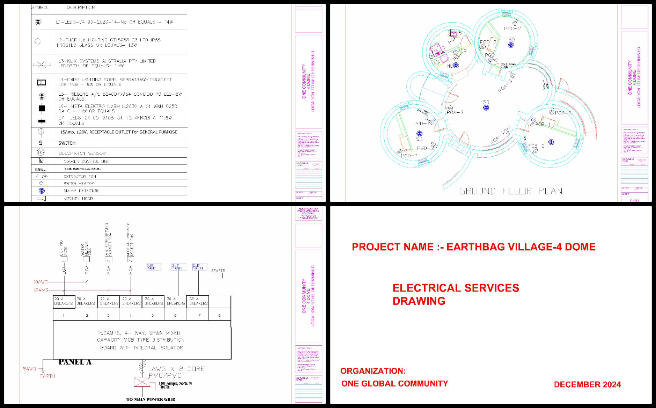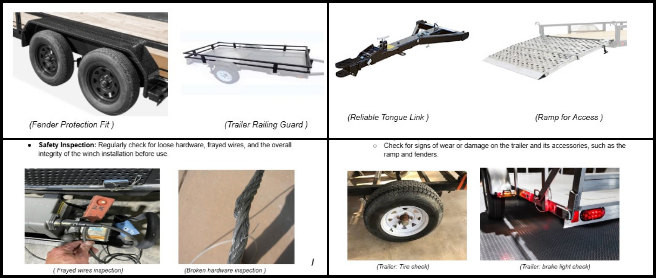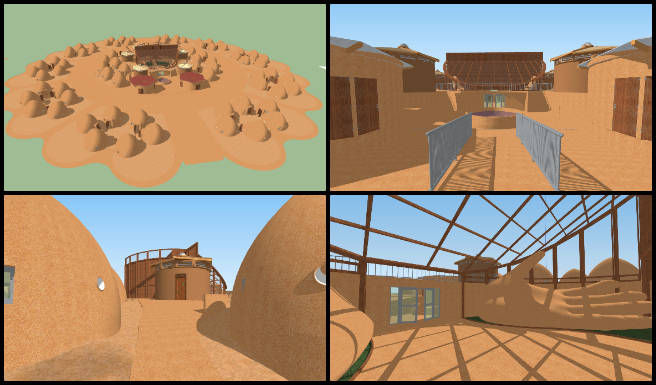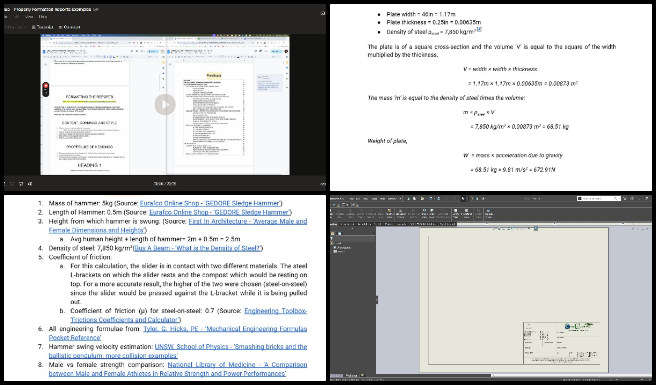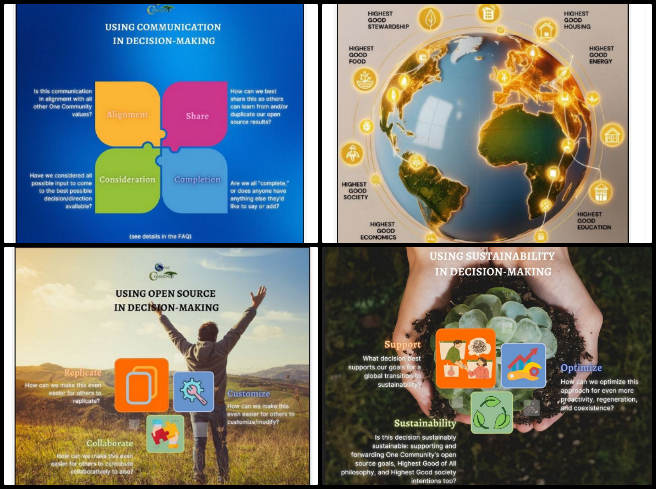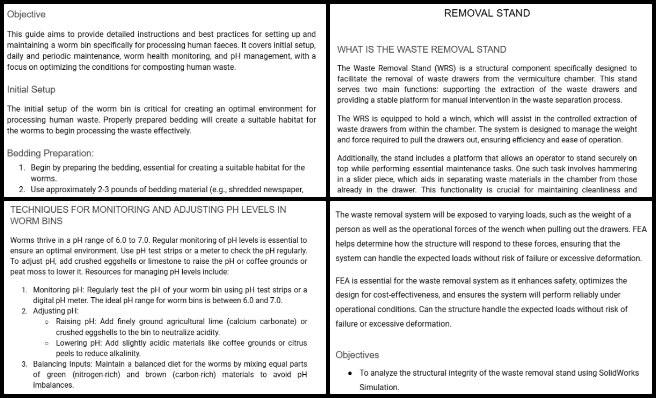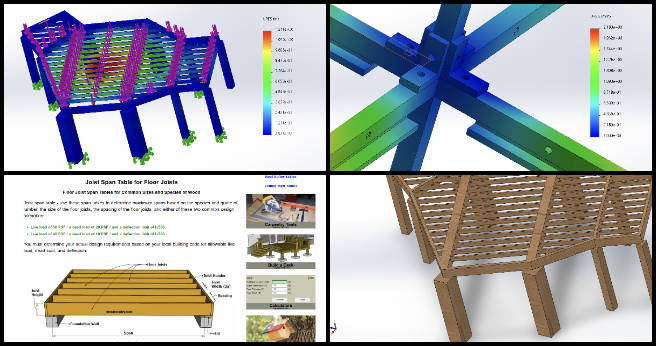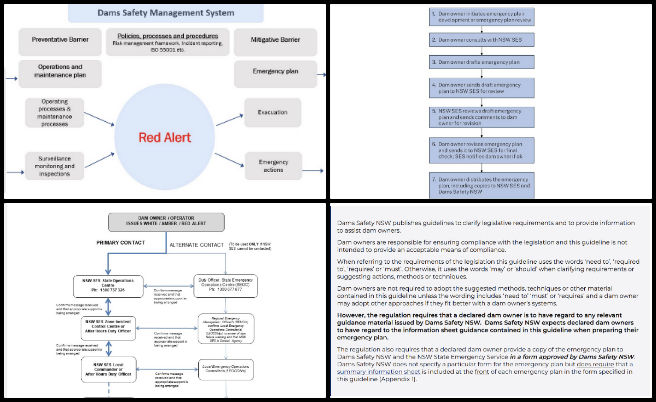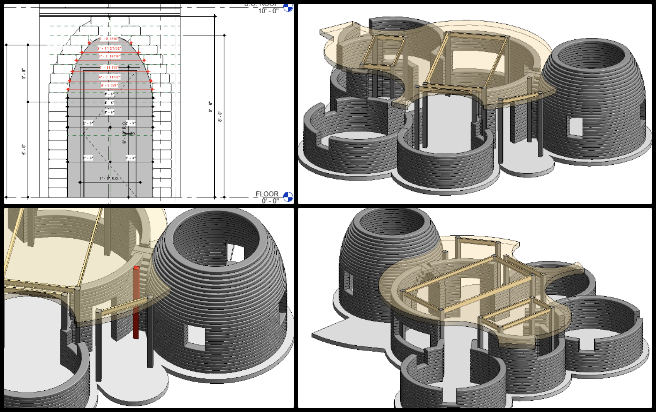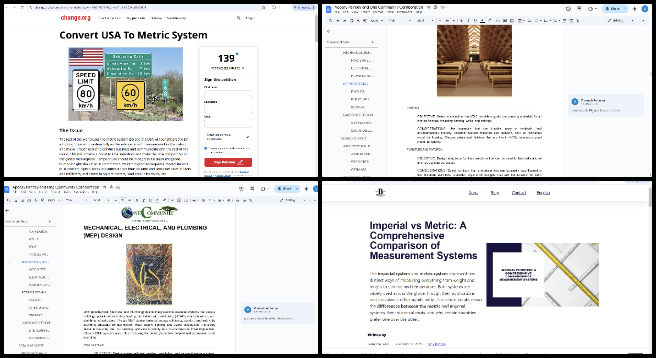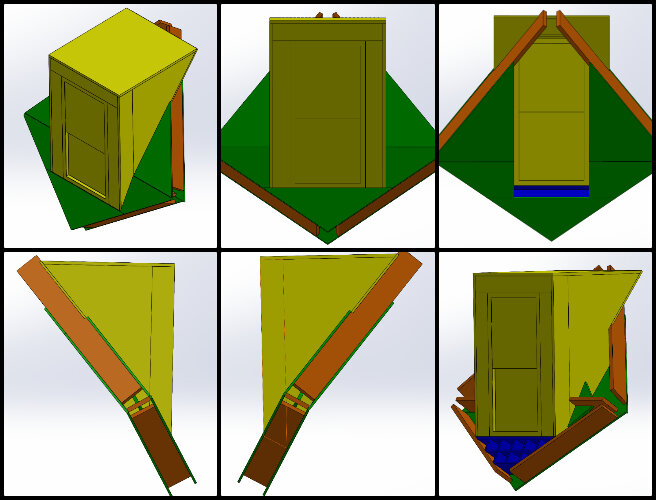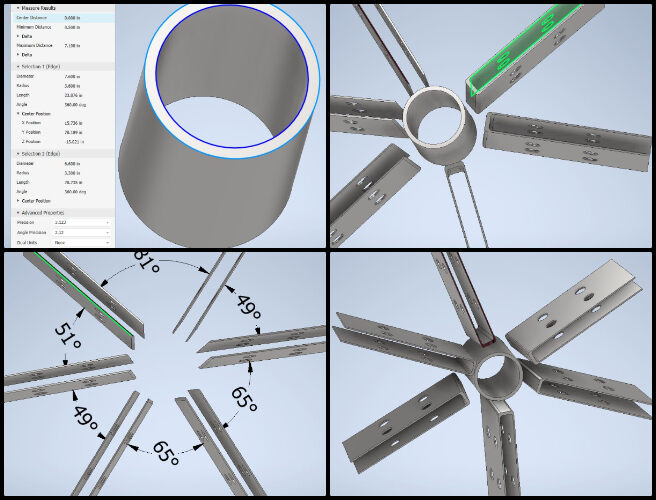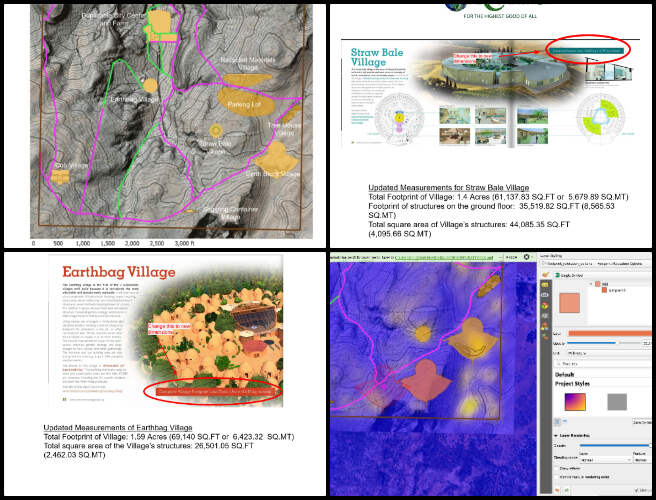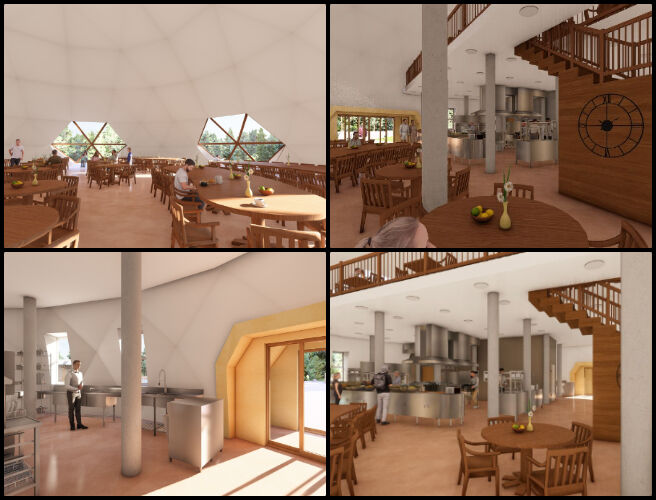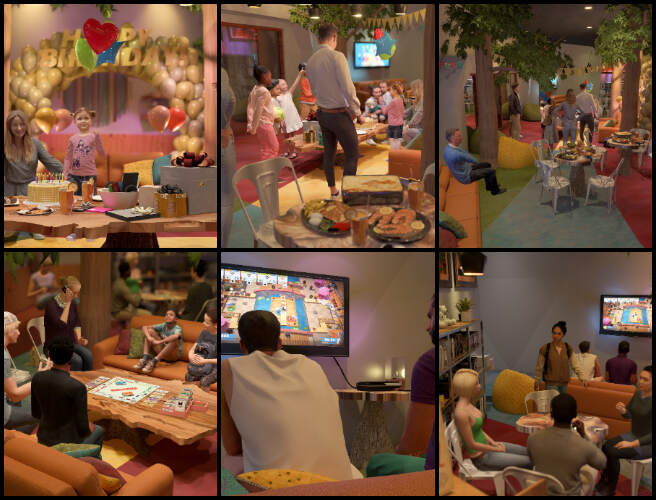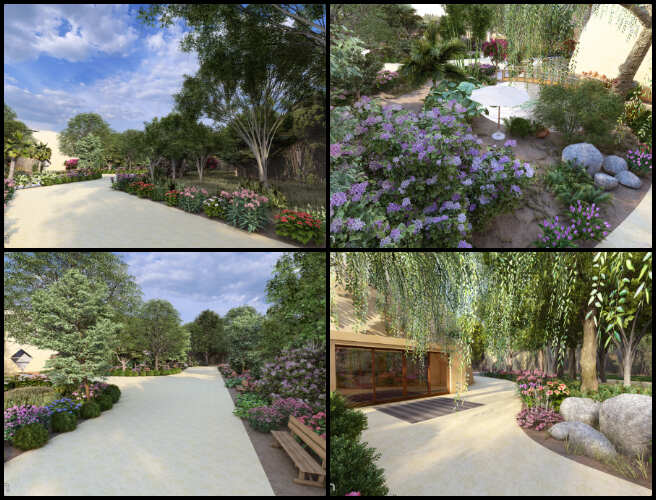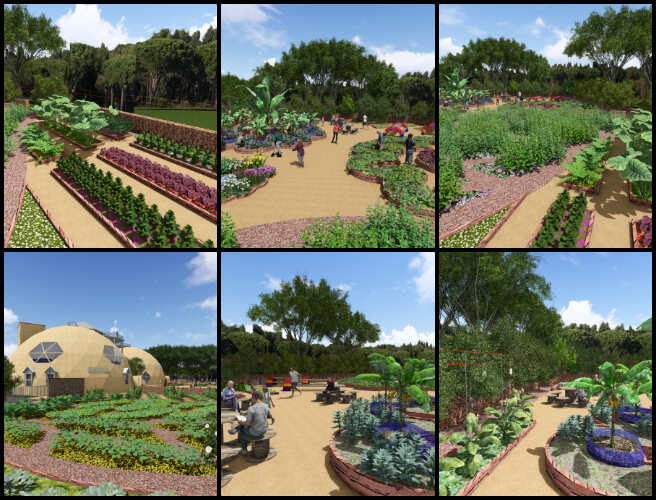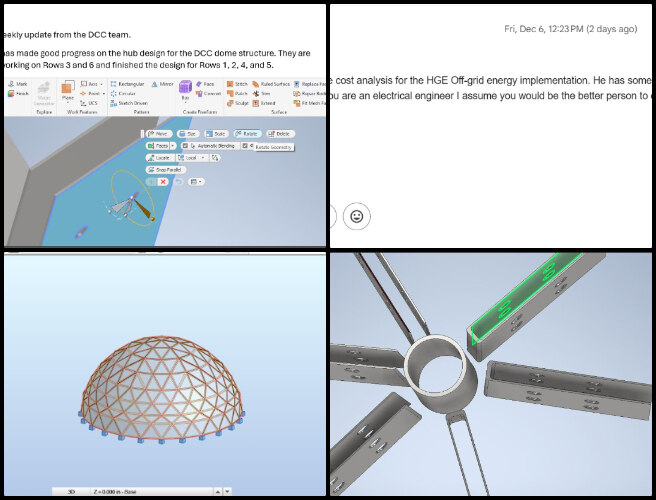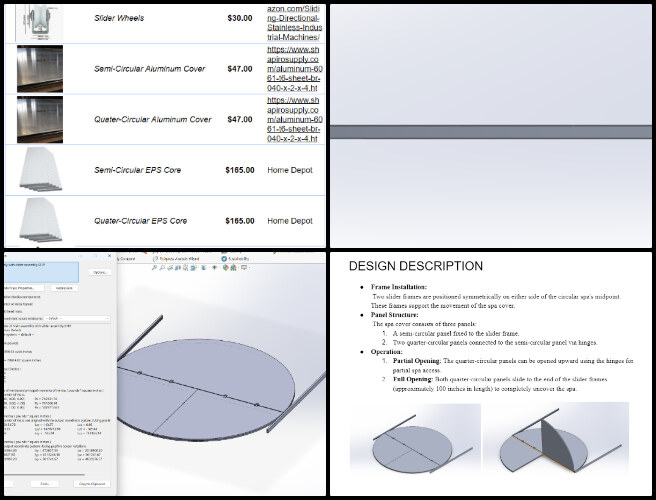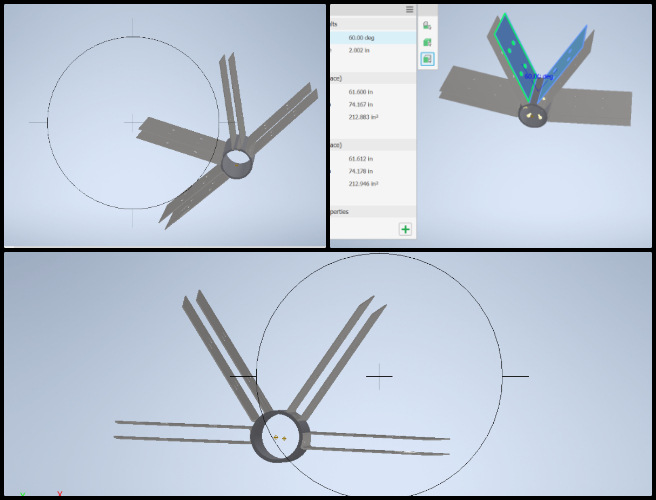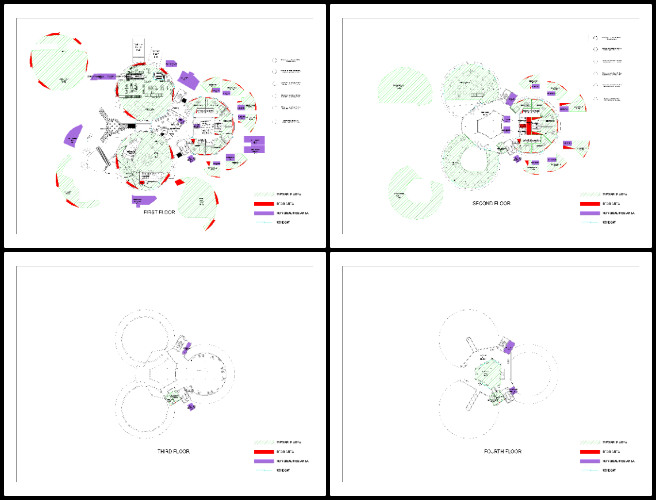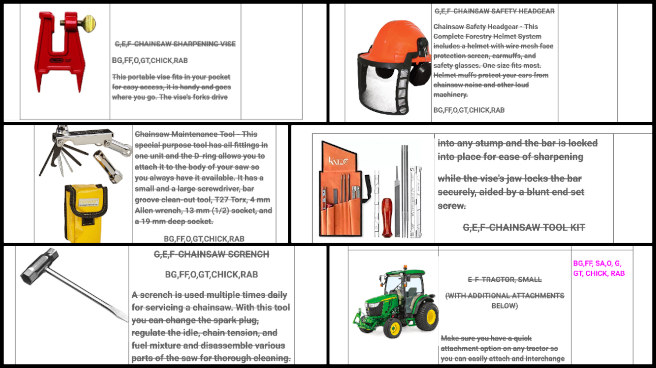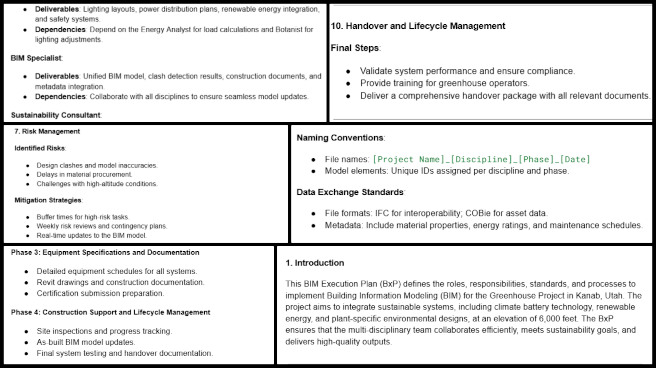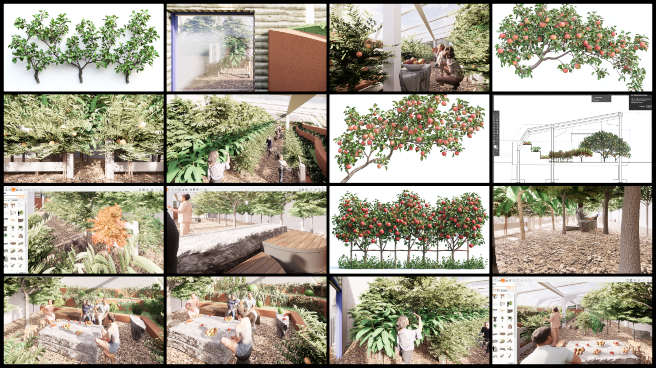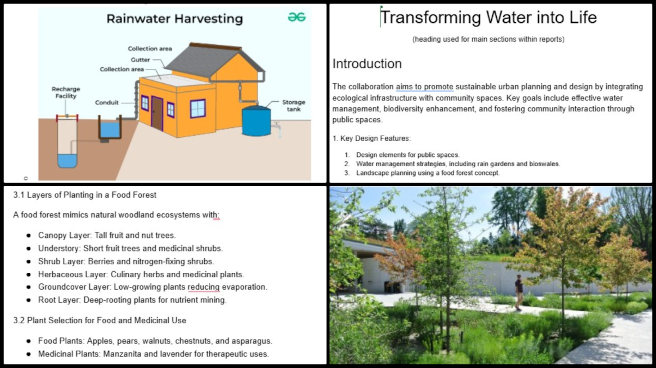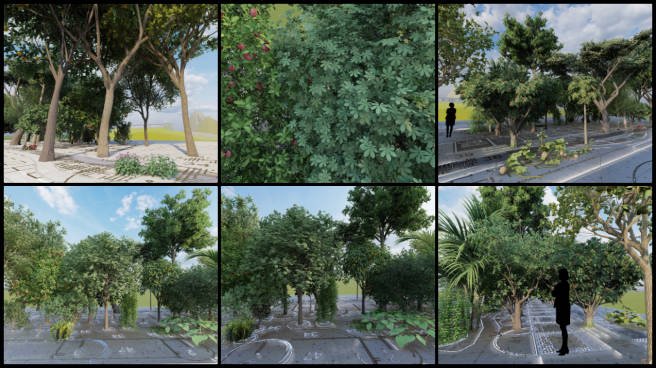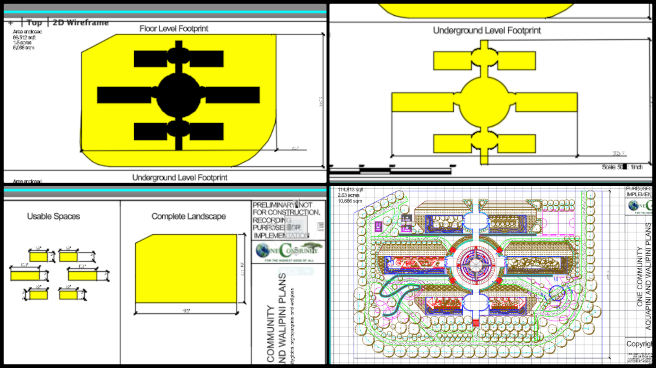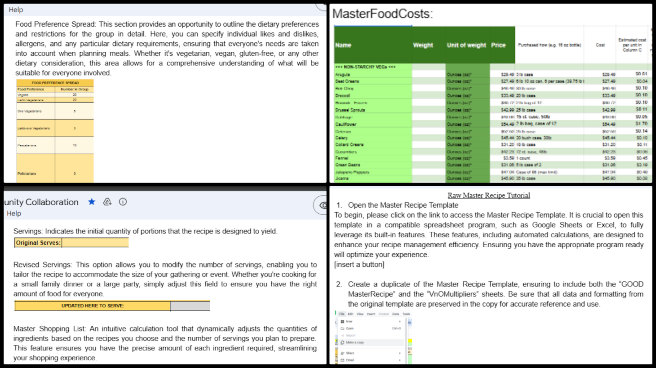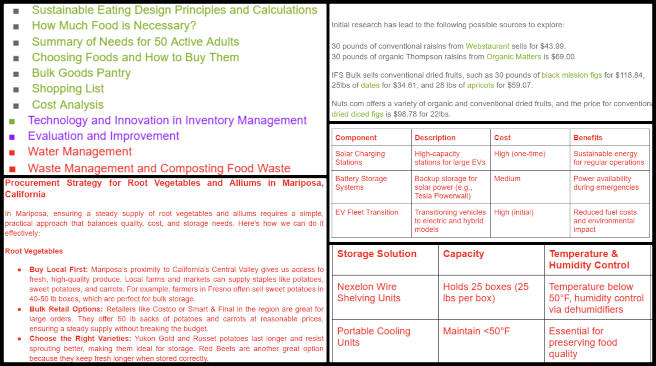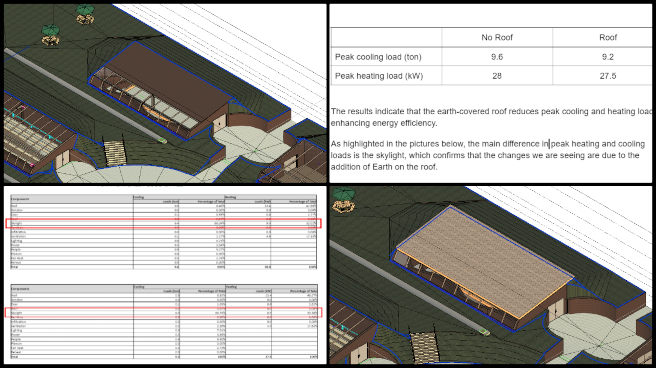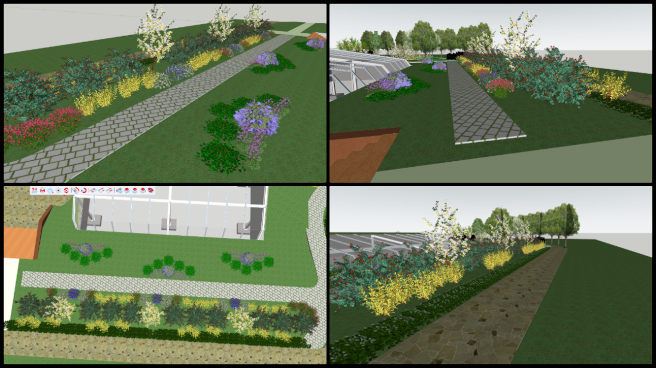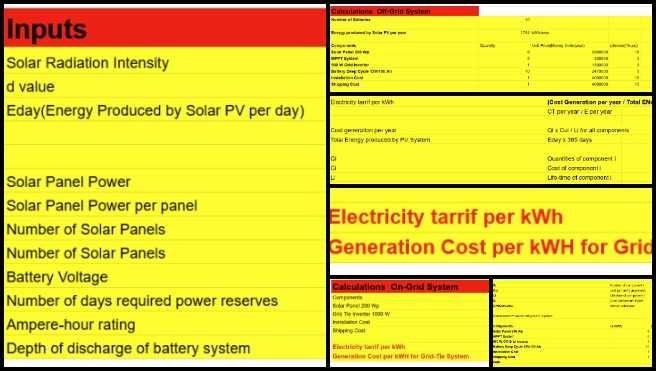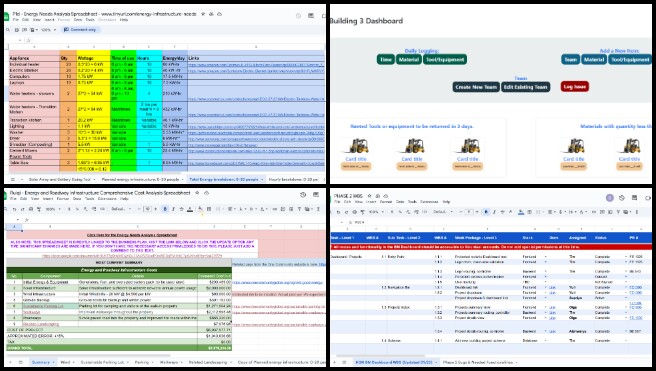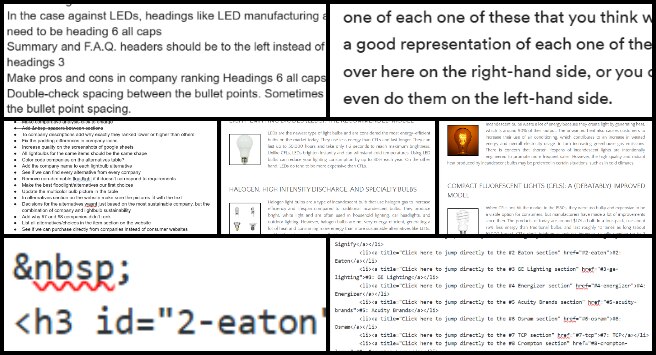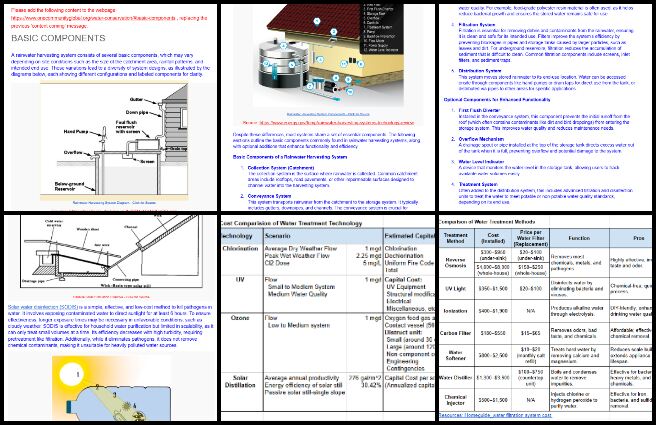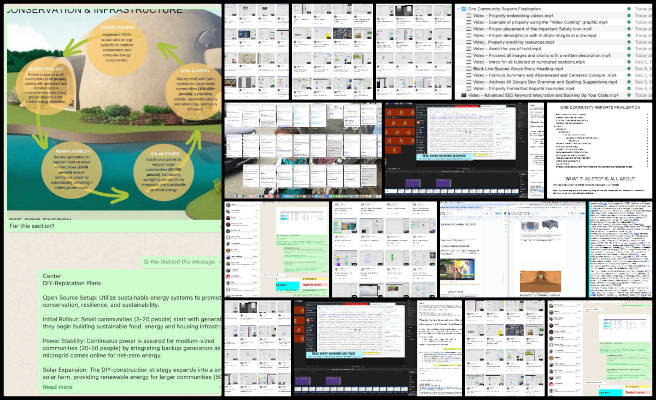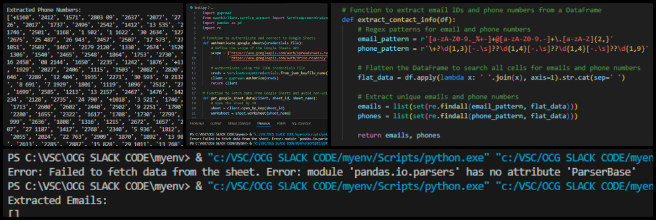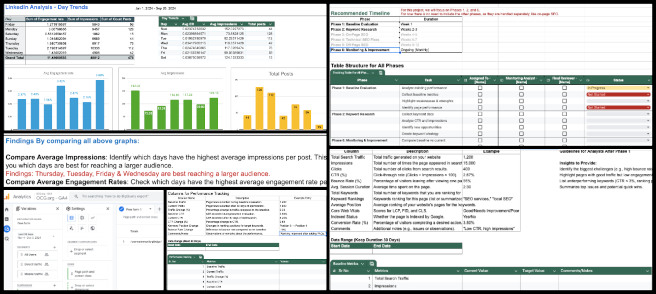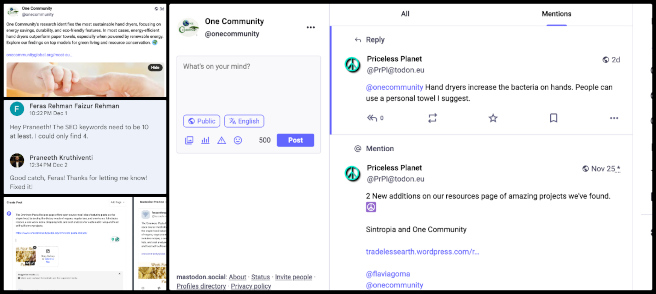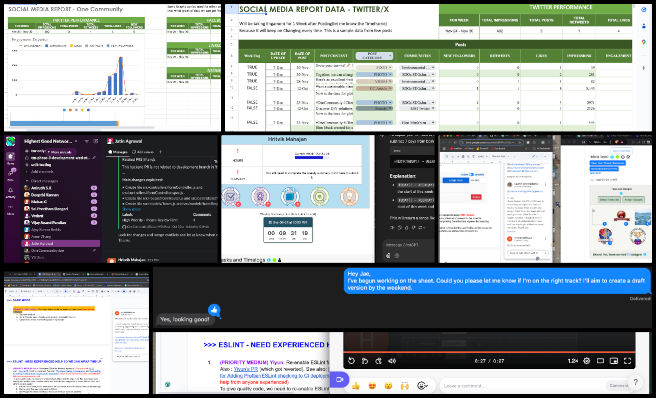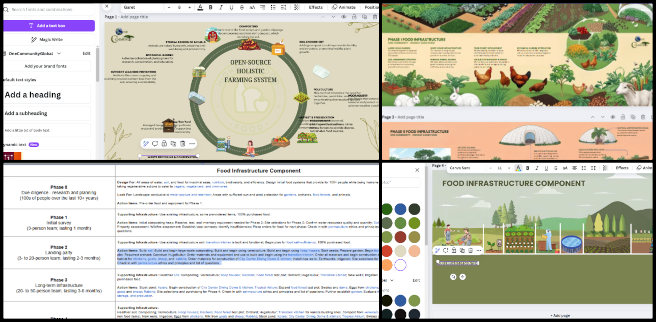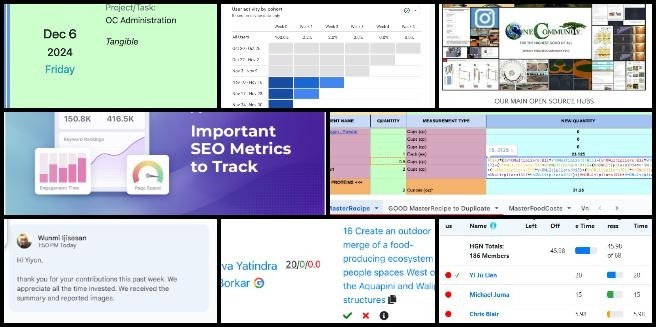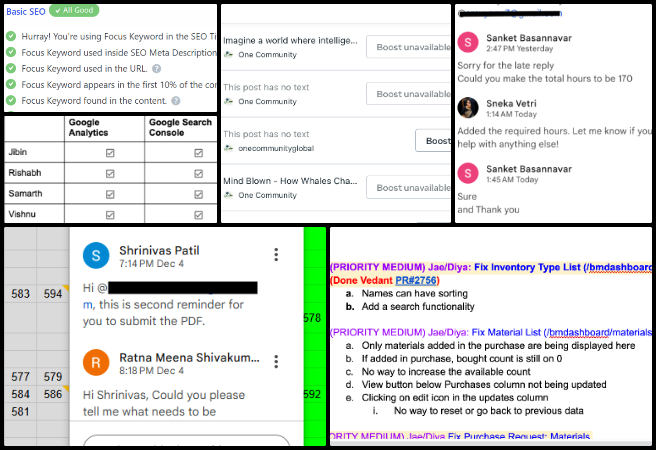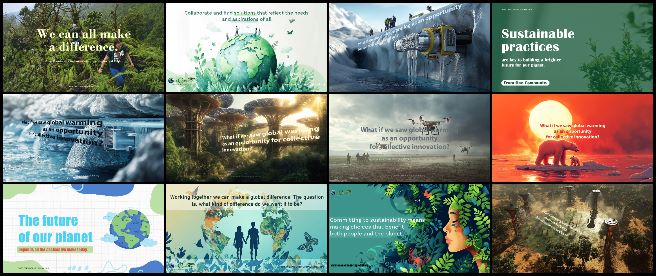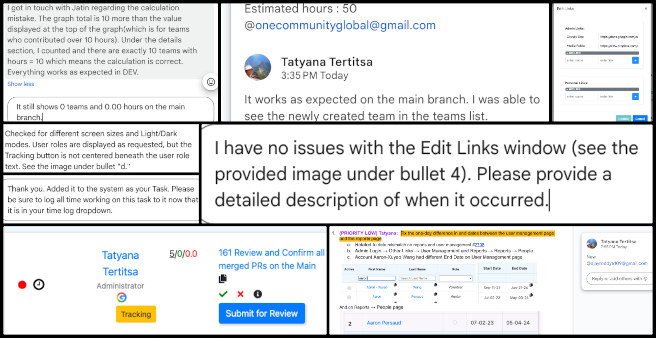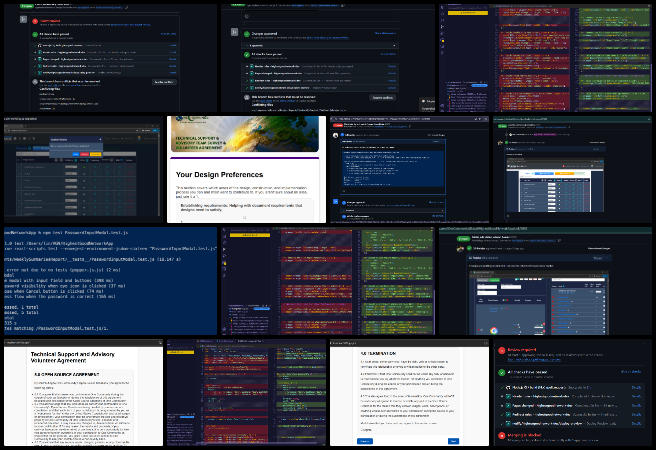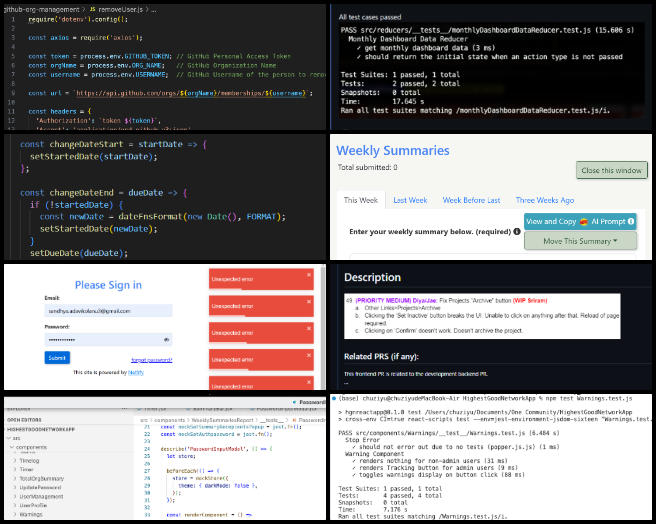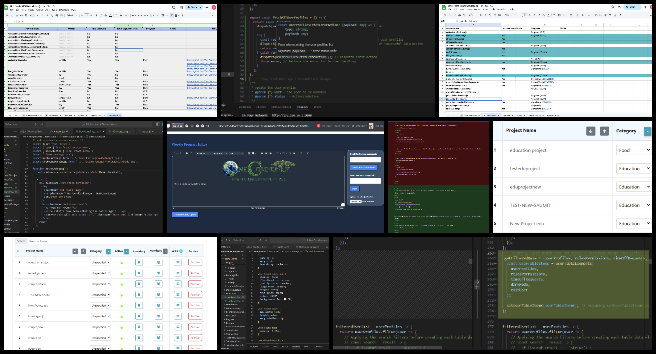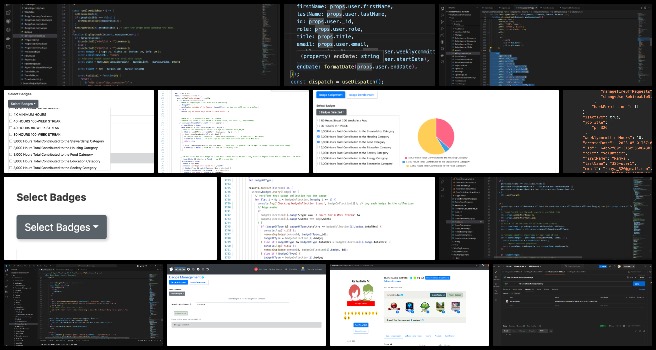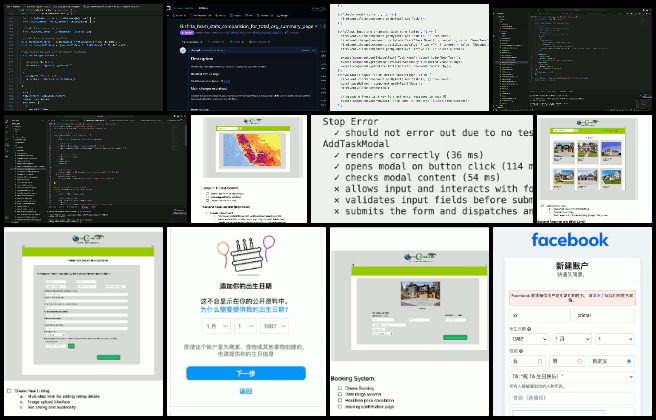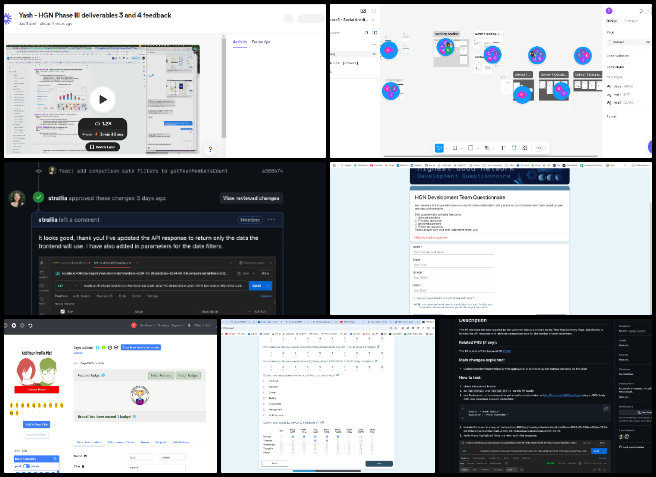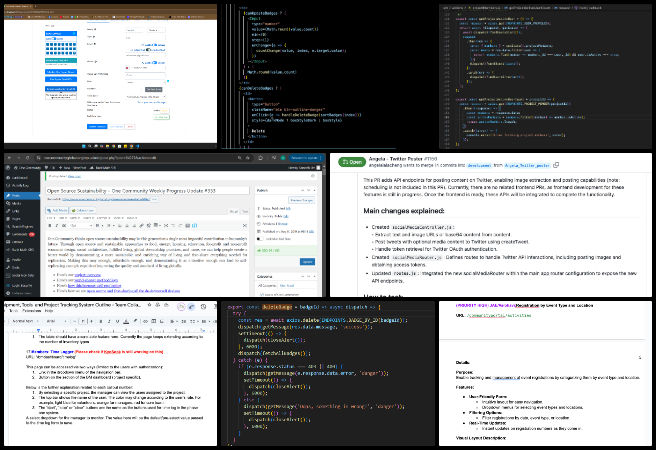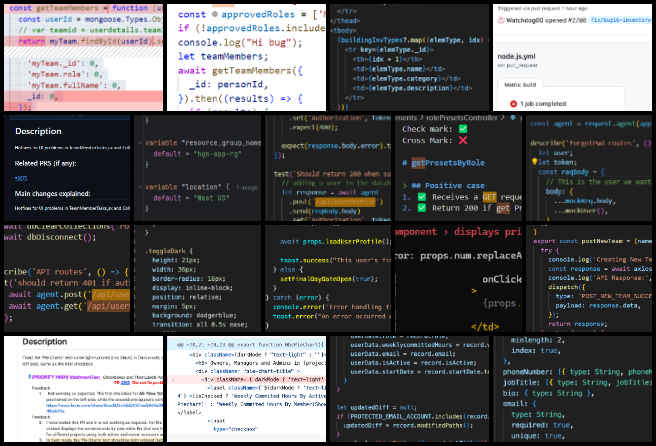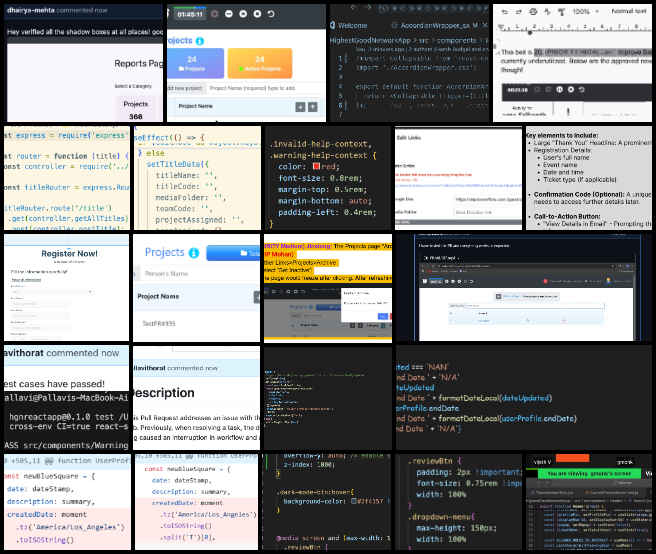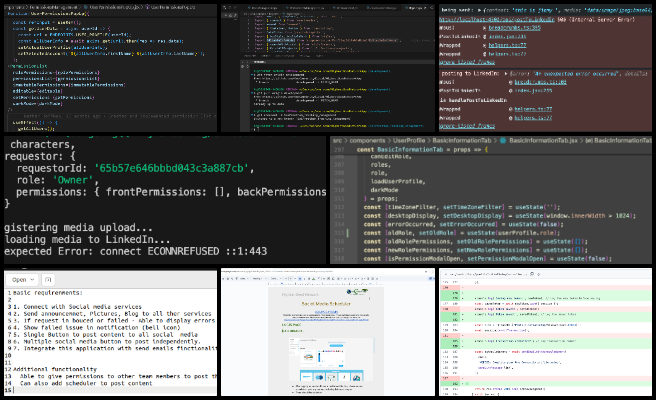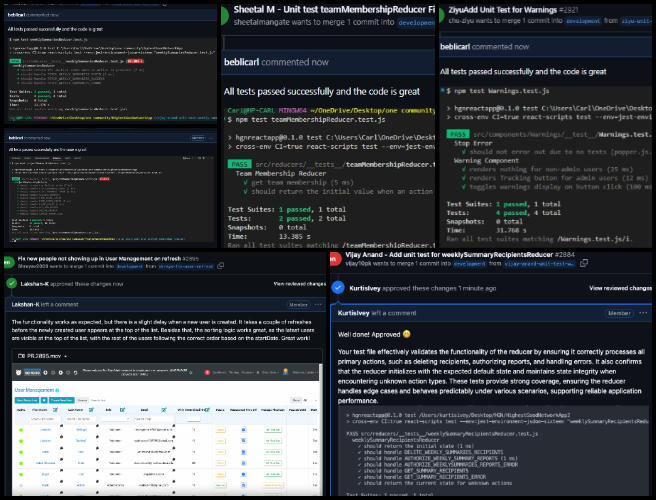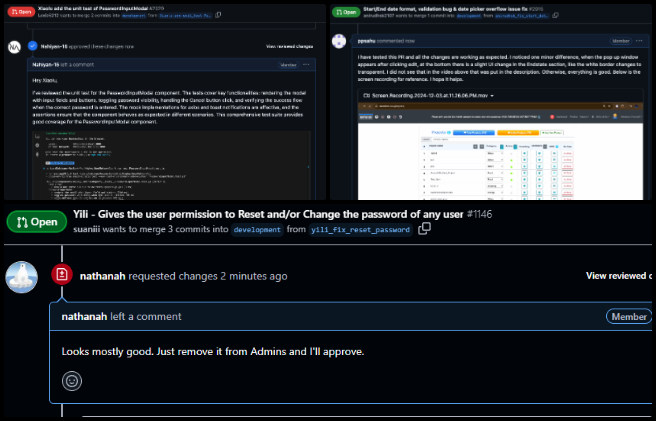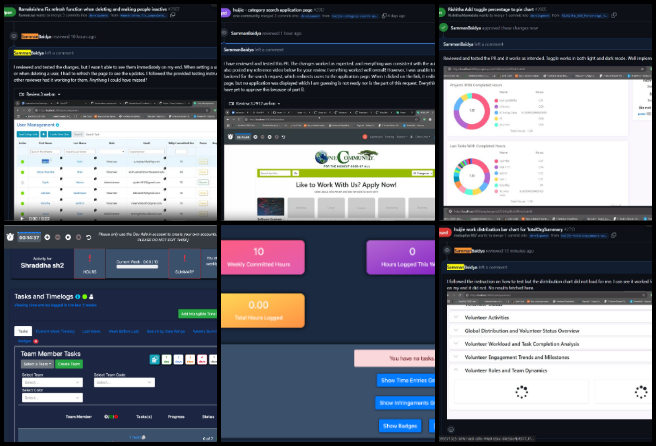Maximizing Sustainable Human Potential – One Community Weekly Progress Update #612
At One Community, we are maximizing sustainable human potential by integrating sustainable approaches to food, energy, housing, education, and economics. Our all-volunteer team is creating a self-replicating model that supports fulfilled living and global stewardship practices. Through open sourcing and free sharing every aspect of our work, we aim to establish a global network of teacher/demonstration hubs focused on regenerating our planet and evolving sustainability for “The Highest Good of All“.
- Here’s our project overview on maximizing sustainable human potential
- Here’s our world-change methodology
- Here’s how this becomes self-replicating
- Here’s how we are open source and free-sharing all the do-it-yourself designs
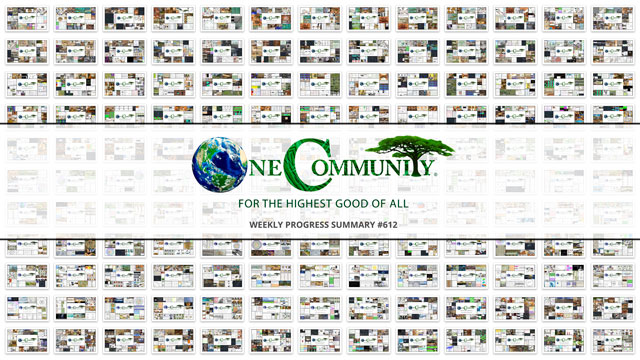
OUR MAIN OPEN SOURCE HUBS
Click on each icon to be taken to the corresponding Highest Good hub page.
One Community’s physical location will forward this movement as the first of many self-replicating teacher/demonstration communities, villages, and cities to be built around the world. This is the December 9th, 2024 edition (#612) of our weekly progress update detailing our team’s development and accomplishments:
Maximizing Sustainable Human Potential
One Community Progress Update #612
DONATE | COLLABORATE | HELP WITH LARGE-SCALE FUNDING
CLICK HERE IF YOU’D LIKE TO RECEIVE AN EMAIL EACH WEEK WHEN WE RELEASE A NEW UPDATE
YOU CAN ALSO JOIN US THROUGH SOCIAL MEDIA
ONE COMMUNITY WEEKLY UPDATE DETAILS
HIGHEST GOOD HOUSING PROGRESS
 One Community is maximizing sustainable human potential through Highest Good housing that is artistic and beautiful, more affordable, more space efficient, lasts longer, DIY buildable, and constructed with healthy and sustainable materials:
One Community is maximizing sustainable human potential through Highest Good housing that is artistic and beautiful, more affordable, more space efficient, lasts longer, DIY buildable, and constructed with healthy and sustainable materials:
- Learn about maximizing sustainable human potential: Our Upcoming Crowdfunding Campaign
- Learn about the different village models: 7 Sustainable Village Models
- Visit the open source portals for the first two: Earthbag Village OS Hub | Straw Bale Village OS Hub
This week, Adefola (Fola) Madehin (Electrical Design Specialist) continued his work with Earthbag Village electrical designs; which can be important in maximizing sustainable human potential. Fola worked on the Earthbag Village project, completing the socket and panel layout with receptacles positioned in the bedrooms and living room, and the distribution panel installed in the living room. He finalized the lighting circuit lettering and selection, along with the socket ring circuit lettering and selection, for the Earthbag 4 Dome Village. He also completed the schematic diagram for the distribution panel in compliance with the National Electrical Code (NEC) and made progress on the schematic diagram using the American standard for single-phase voltage. The Earthbag Village is the first of 7 to be built as the housing component of One Community’s open source model for maximizing sustainable human potential. See some of his work in the collage below.
Adil Zulfiquar (Engineer) continued working on the Vermiculture Toilet engineering designs. Designs of this nature may be key in maximizing sustainable human potential His work centered on adding a new section on the trailer components, featuring images to enhance the utility trailers’ documentation. Safety measures in the winch operating manual were updated to include checks for frayed wires and broken connections, and the trailering operation manual was revised with guidelines on regular maintenance and inspection. Pictorial representations were introduced to improve clarity, and the report formatting was adjusted for better alignment and readability. The Earthbag Village is the first of 7 to be built as the housing component of One Community’s open source model for maximizing sustainable human potential. See below for some of the pictures related to work.
Akshit Sethi (Architectural Designer) continued working on updating the Earthbag Village SketchUp and AutoCAD layouts. Akshit focused on advancing the EarthBag Village project by finalizing plans and updating the AutoCAD drawings to incorporate feedback and revisions. Maximizing sustainable human potential is also largely dependent on adjustment and updates. He also completed the SketchUp model, refining the materials to match the existing design. This work involved ensuring visual accuracy and consistency across the model, aligning it with the overall design goals. These tasks contributed to moving the project forward, maintaining precision and quality in the deliverables. The Earthbag village is the first of 7 villages to be built as part of One Community’s open source model for maximizing sustainable human potential. See his work in the collage below.
Anil Karathra (Mechanical Engineer) continued helping complete the Vermiculture Toilet engineering and designs. His work focused on reviewing documentation updates for accuracy, preparing weekly summaries, and uploading relevant screenshots. Feedback from the latest review video was incorporated into the collaboration document. The success of maximizing sustainable human potential also requires collaboration and continuous feedback. During the weekly team meeting, discussions addressed the feasibility of developing a BIM model for the eco-toilet and ensuring that early-stage project requirements align with current progress to keep the project within scope.
Progress was also made on developing SolidWorks engineering drawing templates for use across One Community projects. Additionally, a basic outline for the vermiculture toilet bill of materials was created, and a list of parts and potential vendors for the toilet system was initiated. This approach to maximizing sustainable human potential supports the development of innovative solutions that are both environmentally friendly and effective. See below for pictures related to this work.
Charles Gooley (Web Designer) continued working on the Aircrete Engineering and Research: Compression Testing, Mix Ratios, R-value, and More page. He completed the Open Source DIY Earth Dam Design & Construction for Water Retention, Pond & Lake Creation tutorial by finalizing sections on construction methods for uses such as irrigation, aquaculture, recreation, and ecosystem support, which are central to maximizing sustainable human potential. Additionally, Charles integrated images into the One Community Pledge and related pages, resizing them to a width of 640 pixels and linking each to its full-size version. Aircrete is an alternative being explored for the Earthbag Village, a foundational part of One Community’s open-source model for maximizing sustainable human potential. Take a look at some of the work in the images below.
Joseph Osayande (Mechanical Engineer) continued helping finish the Vermiculture Toilet engineering and design details. Joseph focused his efforts on improving the formatting of technical reports, including significant updates to one report. Effective reporting can be a good way of maximizing sustainable human potential assessment. Updates involved reducing technical jargon to improve readability, checking grammar, and adding images and step-by-step instructions for clarity. Additional context was included to simplify the content and provide a clearer process for a general audience. The Earthbag Village is the first of 7 to be built as the housing component of One Community’s open source model for maximizing sustainable human potential. See some of his work in the collage below.
Karthik Pillai (Mechanical Engineer) continued helping finish the Vermiculture Toilet engineering and helping with the Earthbag Village 4-dome home roof plan. Karthik conducted finite element analysis (FEA) for the roof of the 4 Dome Cluster project, which determined that standard timber would not achieve the required deflection of less than one inch, prompting the decision to use I-section wooden beams. He also worked on optimizing the vermiculture toilet design by performing additional FEAs and making iterative adjustments to the model to improve functionality and meet project requirements. The Earthbag Village is the first of 7 to be built as the housing component of One Community’s open source model for maximizing sustainable human potential. See the work in the collage below.
Loza Ayehutsega (Civil Engineer/Assistant Civil Engineer) completed another week working on the Earth Dam risk assessment and dam break hazard assessment. Risk and hazard assessment is an integral part of maximizing sustainable human potential. Loza reviewed comments on the report, focusing on updating sections with revised image links. Additionally, she examined documents on emergency actions to protect dams and their remedial measures, emphasizing the importance of safeguarding lives, property, and the environment. Her work included structuring a guide for emergency response and outlining subsequent remedial actions. This approach to maximizing sustainable human potential supports the development of innovative solutions that are both environmentally friendly and effective. See below for pictures related to this work.
Michaela Silva (Architect) continued working on the interior details for the Earthbag Village 4-dome home design. Michaela worked on the Revit model, detailing each layer of the earthbag structure. Defining and distinguishing each layer is essential for maximizing sustainable human potential. She also facilitated a meeting to review the structural frame, during which it was noted that the current framing dimensions tested did not meet the 1″ maximum deflection requirement. This led to a recommendation to explore alternative framing members. The Earthbag Village is the first of 7 villages to be built as part of One Community’s open source model for maximizing sustainable human potential. See her work in the collage below.
Vimarsh Acharya (Engineering Manager and Technical Reviewer) continued working on identifying sustainability-related arguments covering the Highest Good Lifestyle Considerations and sourcing quality research to support each one. Maximizing sustainable human potential is largely dependent on thorough research. Vimarsh finalized corrections in the Ultimate Classroom Structural Design file, addressing minor revisions before completing the task. He also reviewed a document prepared by Jae, intended for community finalization. Additionally, he conducted research on the process of filing a petition to convert the United States’ measurement system from imperial to metric, producing initial content for further development. The One Community model, which combines forward-thinking education with sustainably built classrooms like this, is an excellent example of maximizing sustainable human potential. See the collage below for his work.
DUPLICABLE CITY CENTER PROGRESS
 One Community is maximizing sustainable human potential through a Duplicable and Sustainable City Center that is LEED Platinum certified/Sustainable, can feed 200 people at a time, provide laundry for over 300 people, is beautiful, spacious, and saves resources, money, and space:
One Community is maximizing sustainable human potential through a Duplicable and Sustainable City Center that is LEED Platinum certified/Sustainable, can feed 200 people at a time, provide laundry for over 300 people, is beautiful, spacious, and saves resources, money, and space:
- Learn about this building and it’s function: Duplicable City Center Open Source Hub
This week, Adithya Bhalaji (Mechanical Engineer) continued exploring various types of dormer designs available in the market. Understanding market trends is an integral part of maximizing sustainable human potential. He focused on the design of the second-floor dormer, addressing its internal structure, external enclosures, window frame, and panes, as well as defining the attachment methods for the overall structure. The dormer assembly was completed, with materials specified for each component. Adithya is currently preparing the assembly instructions and compiling a slide deck. The next phase of the project involves performing a structural FEA study for individual components and the overall structure before submitting the final design for review. The Duplicable City Center represents a fundamental element of One Community’s open-source approach, dedicated to maximizing sustainable human potential. View examples of this work in the pictures provided below.
Arnob Mutsuddi (Mechanical Engineer) continued working on Duplicable City Center structural engineering model and details. Work began on the 6-3 hub connector, with the middle ring design currently in progress. Efforts continued on the row 6-2 hub connector, where the middle ring and five side struts have been designed. Progress on the row 6-3 hub connector included completing the middle ring and all side struts. Alignment of the side struts with the middle ring for the 6-3 hub connector was initiated, with ongoing efforts to ensure compliance with GD&T standards throughout the week. The Duplicable City Center is a foundational part of One Community’s open-source model, which excels in the mission of maximizing sustainable human potential. This approach is integral to their mission of maximizing sustainable human potential through innovative and scalable solutions. See some of this work in the pictures below.
Chris Blair (GIS Technician/Horticulturist) continued working with GIS data as part of One Community’s Permaculture Design that includes the location of the Duplicable City Center. He worked with GIS data as part of One Community’s Permaculture Design. Spatial analysis is an important technique in maximizing sustainable human potential. Using accurately scaled footprints of the villages and city center, he created a new master plan for the property, taking into account slope and solar potential. He also prepared a write-up identifying updates needed for the village sizes in One Community’s digital book, Seven Model Villages and City Center. Within One Community’s open-source framework, the Duplicable City Center plays a central role in maximizing sustainable human potential. The images below showcase some of this work.
Faeq Abu Alia (Architectural Engineer) continued his work on the Duplicable City Center kitchen. The existence of food security measures is key strategy in maximizing sustainable human potential. He refined the Duplicable City Center kitchen model in SketchUp, addressing design issues and implementing feedback to improve its overall quality. He adjusted materials in Lumion to enhance the visual details, created three walkthrough paths to highlight the kitchen’s design, and completed rendering the walkthrough videos to meet project specifications. The Duplicable City Center represents a fundamental element of One Community’s open-source approach, dedicated to the mission of maximizing sustainable human potential. View examples of this work in the pictures provided below.
Jason Bao (Architectural Designer) continued working on producing renders for the Duplicable City Center library. His work focused on producing renders for the requested game night and birthday scenes. Both scenes required rearranging existing assets within the model and sourcing new assets to complete the desired setups. For the game night scene, adjustments were made to lighting, models, textures, and figures to create a realistic environment depicting people of varying ages, demographics, and interests engaging in gaming within a shared space. Knowing the key population characteristics is essential in maximizing sustainable human potential. After identifying optimal camera angles for storytelling shots, high-quality renders were completed and uploaded to Dropbox.
For the birthday scene, adjustments were made in SketchUp to incorporate party-specific elements such as decorations, food, and drinks, followed by importing the model into Lumion for further refinements. Lumion adjustments included tweaking textures, colors, and lighting to ensure consistency and addressing issues such as texture overlay problems, balloon quality, and clipping errors. The finalized birthday scene renders were completed and uploaded, with a note added in Dropbox to confirm if additional renders of the scene are required. The Duplicable City Center is a foundational part of One Community’s open-source model, which excels in maximizing sustainable human potential. This approach is integral to their mission of maximizing sustainable human potential through innovative and scalable solutions. See some of this work in the pictures below.
Mohammed Maaz Siddiqui (Architect) continued working on the outdoor landscape areas for the Duplicable City Center. He focused on developing the front landscape area of the Duplicable City Center project by integrating trees based on permaculture plans, selecting and planting specified or similar species to align with design requirements. The adoption of diverse species contributes to maximizing sustainable human potential. He enhanced the landscape’s volume by increasing tree density and incorporating undergrowth to reduce the appearance of emptiness. Additional plants, trees, and flowers were added to create a more vibrant and engaging environment. Changes were made to the landscape based on review feedback to refine the overall scene. Within One Community’s open-source framework, the Duplicable City Center plays a central role in the mission of maximizing sustainable human potential. The images below showcase some of this work.
Nimika Devi (Architect) continued her contributions to the landscape design and development of the Duplicable City Center‘s urban farm. Her work on the poultry area involved incorporating additional birds, cows, and sheep based on the project map. Such integration is vital in maximizing sustainable human potential. Small rendering details were incorporated to enhance the visual quality of the walkthrough. Within One Community’s open-source framework, the Duplicable City Center plays a central role in the mission of maximizing sustainable human potential. The images below showcase some of this work.
Rachan Rao (Project Manager) worked with Vatsal to assist him with the cost analysis for Off-Grid energy implementation in the Highest Good energy project. Adopting sustainable energy is also another way of maximizing sustainable human potential. He reviewed each project phase, providing a detailed explanation of the energy sources and how to use the provided spreadsheets effectively. He also introduced Vatsal to Sarmad so that they can connect with each other for additional help. Rachan also collaborated with the DCC structural design team to assess their progress and provide updates on their weekly objectives. Within One Community’s open-source framework, the Duplicable City Center plays a central role in the mission of maximizing sustainable human potential. The images below showcase some of this work.
Sanket Basannavar (Mechanical Engineer) continued working on the Duplicable City Center spa cover as part of the City Center Natural Pool and Eco-spa Designs. The weight of the spa cover was reduced from 1200 lbs to 630 lbs by modifying the initial design. Such modifications are important in maximizing sustainable human potential. Static and thermal analyses are being prepared for the updated design, and the report is being rewritten to align with the website format. Research on market-available products for spa covers was also initiated to support cost analysis. Within One Community’s open-source framework, the Duplicable City Center plays a central role in maximizing sustainable human potential. The images below showcase some of this work.
Tasmia Hasan (Design Engineer) continued her work on the structural engineering of the Duplicable City Center. She focused on refining the row 3 hub connector design by adjusting the angles of the steel ledges to achieve a better fit with the frame. She reviewed the original fit calculations and made the necessary modifications; which can also be vital in maximizing sustainable human potential. Additionally, she worked on optimizing the ring angles and fit. As a foundational component of One Community’s open-source strategy, the Duplicable City Center is designed for maximizing sustainable human potential. You can see examples of this work in the following images.
Yancong E (Architectural Designer) continued working on the Duplicable City Center project. He updated multiple sections of the tutorial based on recent feedback, including formatting changes to the quotes section, headings, and bullet points, as well as revisions to the wording in the floor-by-floor analysis section. He also added a legend labeled “Non-Qualified Area” to the floor plan and updated the hatch color for the corresponding sections to improve clarity and readability. Within One Community’s open-source framework, the Duplicable City Center plays a central role in the mission of maximizing sustainable human potential. The images below showcase some of this work.
HIGHEST GOOD FOOD PROGRESS
 One Community is maximizing sustainable human potential through Highest Good food that is more diverse, more nutritious, locally grown and sustainable, and part of our open source botanical garden model to support and share bio-diversity:
One Community is maximizing sustainable human potential through Highest Good food that is more diverse, more nutritious, locally grown and sustainable, and part of our open source botanical garden model to support and share bio-diversity:
- Learn about the structures: Hoop House Hub | Aquapini & Walipini Open Source Hub
- See what we’ll be growing: Gardens & Hoop Houses | Large-scale Structures | Food Forest | TA
This week, the core team continued working on the Highest Good food Master List of Tools, Equipment, & Materials/Supplies adding items sourced from the Goat, Chicken, and Rabbit pages. Each added entry represents a shared item used across multiple projects within One Community. Some of the items added this week include a mid-sized tractor, chainsaw tool kit, scrench, chainsaw sharpening vise, chainsaw safety headgear, chainsaw replacement chain, and chainsaw maintenance tools. Items specific to a single project and not used elsewhere are excluded from the Master List of Tools, Equipment, and Materials/Supplies. This effort is part of One Community’s open source model for maximizing sustainable human potential. See below for some of the pictures related to this work.
Jay Nair (BIM Designer) continued working on Aquapini and Walipini Planting and Harvesting lighting and HVAC design; creating a spreadsheet for the cost analysis of parts used in the Greenhouse project, organizing data to support financial evaluation and planning. Maximizing sustainable human potential is largely dependent on financial costing. Additionally, Jay developed a BIM Execution Plan, outlining the project’s standards, workflows, responsibilities, and deliverables to ensure clear guidelines and efficient collaboration among team members. The Highest Good Food initiative is a key component of One Community’s open source plans, focused on maximizing sustainable human potential, and exemplifies the organization’s commitment through innovative design and implementation. Below are some of the images showcasing this work.
Junyi Shi (Landscape Architect) started working on developing a design for Walipini #2 as a part of Aquapini and Walipini Planting and Harvesting project. She adjusted the materials for the People Space structure, switching the primary material to stone; which can also be essential in maximizing sustainable human potential. In CAD, the tree distribution was rearranged to ensure a height progression from south to north. The route within the People Space was redesigned, and these updates were synchronized in SketchUp, where suitable plants and visual representations were selected to accurately reflect the materials and vegetation. For the Apple Wall structure, additional AI rendering was completed to ensure the accuracy of the final section. Lastly, the plants were roughly arranged in the section map to enhance clarity in subsequent visuals. The Highest Good Food initiative is essential to One Community’s open source plans, focused on promoting a sustainable approach to maximizing sustainable human potential. Her contributions are highlighted in the collage below.
Purva Borkar (Landscape Architect) continued with her work on creating an outdoor merge of a food-producing ecosystem and people spaces for the Aquapini and Walipini Planting and Harvesting structures. She worked on a report exploring sustainable urban design through green infrastructure integration and community spaces. Sustainable designs is central in maximizing sustainable human potential. The report focuses on advanced water management systems, including rain gardens and bioswales, enhancing biodiversity with native plants, and designing functional green spaces. It emphasizes creating ecologically balanced, visually appealing, and community-focused environments that promote sustainability and public interaction. As part of One Community’s open source efforts, the Highest Good Food initiative embodies a commitment to maximizing sustainable human potential. The images below offer a glimpse into these ongoing efforts.
Silin Wang (Landscape Designer) continued rendering work for Aquapini and Walipini Planting and Harvesting #2: Tropical Moist House. She searched for edible aquatic plant models that were not available in the Lumion asset library and created custom models to supplement them. The supplementation of models can also contribute to maximizing sustainable human potential effectively. She then arranged these accurate, high-quality plant models within the planting beds in the aquatic zones on both sides. While preparing the rendering documentation for the Highest Good Food initiative, focused on maximizing sustainable human potential, she identified discrepancies between some models and the CAD drawings, along with design flaws that could hinder circulation within the space, prompting her to propose potential optimization suggestions. Her work is showcased in the collage below.
Surya Teja Anumolu (Volunteer Mechanical Engineer) continued his work on the Highest Good Food most sustainable construction and agricultural equipment. He focused on refining Aquapini and Walipini Planting and Harvesting footprint drawings to include scale bars and legends at each level for the different types of footprints created last week. Using the master AutoCAD file from the One Community Dropbox folder, Surya combined five distinct drawings to create the final file for the Aquapini and Walipni databases. The Highest Good Food initiative is a key component of One Community’s open-source plans, focused on maximizing sustainable human potential. This approach is critical to ensure alignment with the initiative’s goals. See his work in the collage below.
Syahrina Maulida Majid (Volunteer Nutritionist) continued working on creating menu implementation tutorials as a part of One Community’s Transition Food Self-Sufficiency Plan. She worked on menu implementation by refining and testing the master recipe template, a key component in maximizing sustainable human potential. She developed step-by-step instructions for a tutorial to guide users on data input, adapting the template to various dietary needs, and interpreting its outputs. Observations from earlier testing were integrated to address potential challenges and enhance the tutorial’s clarity. Additionally, Syahrina documented examples to provide practical context, ensuring the tutorial is accessible and applicable to a wide range of users. The Highest Good Food initiative plays a crucial role in One Community’s open source plans for maximizing sustainable human potential. Her work is showcased in the collage below.
Tanmay Koparde (Industrial Engineer And Team Administrator) continued working on the Menu Supply Chain and Shopping Plan, Cost Analysis, and Food Procurement and Storage Plan to streamline organizational workflows and enhance efficiency. Maximizing sustainable human potential largely depends on the implementation efficiency. He performed a case review to assess existing plans and added critical improvements, including new sections on waste management and water management, ensuring alignment with project objectives. He also focused on a hypothetical location, Mariposa, California, tailoring strategies to address its specific needs. Additionally, Tanmay reviewed Kushagra’s training work, identifying minor errors and providing actionable suggestions to improve accuracy and clarity. The Highest Good Food initiative is a key component of One Community’s open source plans, focused on maximizing sustainable human potential. See his work in the collage below.
Vatsal Tapiawala (Mechanical Engineer) continued working on integrating ideas from Paul Wheaton’s “Truly Passive Greenhouse” designs into the Aquapini/Walipinis structures. The incorporation of Aquapini is essential to maximizing sustainable human potential. He focused on analyzing the heating and cooling loads for Walipini 1. He performed a comparative study of the peak loads under various scenarios to understand the thermal performance of the structure. In addition, Vatsal documented the findings and began drafting the report to detail the analysis outcomes. The Highest Good Food Initiative is a key component of One Community’s open source plans, focused on maximizing sustainable human potential. See his work in the collage below.
Ziyi Chen (Landscape Designer) continued working on the design of the outdoor spaces for the Aquapini/Walipinis structures. She worked on model development, focusing on the area between the north road and the outer avenue of the Zen building. Improving movement by designing roads and other modes of transport contributes to maximizing sustainable human potential. Ziyi designed the main landscape connecting the building and the road, incorporating a peripheral straight guide road with repeated low plants and ground cover to create a rhythmic visual effect while minimizing winter shadows. Red dogwood branches were included to enhance visual interest during winter. Given the proximity to the building structure, the design emphasizes a low-color, repeated palette and includes an open space to allow pedestrian access to the Zen structure. The Highest Good Food initiative is a key component of One Community’s open source plans, focused on maximizing sustainable human potential. See her work in the collage below.
HIGHEST GOOD ENERGY PROGRESS
 One Community is maximizing sustainable human potential through Highest Good energy that is more sustainable, resilient, supports self-sufficiency and includes solar, wind, hydro and more:
One Community is maximizing sustainable human potential through Highest Good energy that is more sustainable, resilient, supports self-sufficiency and includes solar, wind, hydro and more:
- Learn about the open source sustainable-energy foundations: Solar, Hydro, and Wind
- Explore our research into the most sustainable products and companies for saving water and energy: Insulation, Eco-laundry, Lightbulbs and Light Bulb Companies, Doors and Door Companies, Windows and Window Companies, Toilets, Faucets and Faucet Accessories, Urinals, and more.
This week, Muhammad Sarmad Tariq (Electrical Engineer) continued helping finish the Highest Good energy component and evaluating grid-tie vs off-grid solar design. He created an Excel sheet to calculate the costs of off-grid versus on-grid PV solar systems, which also contributes to maximizing sustainable human potential. The calculator compares the costs of grid-tie and off-grid solar PV systems in terms of annualized costs and determines the cost of energy generated by each system per kWh. The model assumes that the electricity load is equal to the solar panel PV power, meaning that no electricity is bought from or sold to the grid in both off-grid and on-grid solar PV systems, which relates to maximizing sustainable human potential. View some of the work in the collage below.
Vatsal Hitendra Shah (Volunteer Engineering Project Manager) continued reviewing the One Community Highest Good energy initiative and gained an understanding of its phases. This week, Vatsal worked on clarifying the relationship between the Ruiqi sheet and the cost analysis sheet for the Highest Good Energy project. He learned that component selections are based on requirements outlined on the website for different project phases. Maximizing sustainable human potential can also be achieved in well-defined phases. Additionally, Varsal outlined a plan to create a new sheet showing cost analysis per phase, including justifications for component choices and total phase costs.
On another project, Vatsal met with Chitra to address issues in the Building and Inventory Management dashboard, creating an account for testing and identifying non-functional elements. He also reviewed the work breakdown structure (WBS) used to track tasks and plans to begin drafting a manual focusing on tasks functioning correctly. See the Highest Good Society and Highest Good Network pages for more on how this relates to maximizing sustainable human potential. View some of the work in the collage below.
Viktoriia Zakharova (Administrative Assistant) continued her research to complete the update of the Most Sustainable Lightbulbs and Light Bulb Companies. This week, Viktoriia worked on updating the Most Sustainable Light Bulb and Light Bulb Companies webpage. She compiled feedback from a second review and created a task list to address the suggestions. Viktoriia added missing links to the table of contents to improve navigation, included images for each lightbulb type, made the lightbulb comparative analysis graphic clickable for enlargement, and adjusted the coding to add spacing between sections, which leads to maximizing sustainable human potential. See below in the collage for the work.
Yi-Ju Lien (Environmental Engineer) continued her work on the Highest Good energy LEED points related to stormwater retention. She focused on updating the content for the water harvesting section of the webpage. She introduced the basic components of water harvesting systems and provided an overview of water disinfection technologies. Yi-Ju also included a cost comparison for the various water disinfection methods and created a comparison table for household-scale water infiltration methods, detailing their cost, function, and pros and cons. The tables were designed to help readers evaluate the best options for their system based on their specific needs of maximizing sustainable human potential. See for work in the collage below.
HIGHEST GOOD EDUCATION PROGRESS
 One Community is maximizing sustainable human potential through Highest Good education that is for all ages, applicable in any environment, adaptable to individual needs, far exceeds traditional education standards, and more fun for both the teachers and the students. This component of One Community is about 95% complete with only the Open Source School Licensing and Ultimate Classroom construction and assembly details remaining to be finished. We’ll report on the final two elements to be finished as we develop them. With over 8 years of work invested in the process, the sections below are all complete until we move onto the property and continue the development and open sourcing process with teachers and students – a development process that is built directly into the structure of the education program and everything else we’re creating too:
One Community is maximizing sustainable human potential through Highest Good education that is for all ages, applicable in any environment, adaptable to individual needs, far exceeds traditional education standards, and more fun for both the teachers and the students. This component of One Community is about 95% complete with only the Open Source School Licensing and Ultimate Classroom construction and assembly details remaining to be finished. We’ll report on the final two elements to be finished as we develop them. With over 8 years of work invested in the process, the sections below are all complete until we move onto the property and continue the development and open sourcing process with teachers and students – a development process that is built directly into the structure of the education program and everything else we’re creating too:
- Program Overview: Education Open Source Hub
- How the components work together in designing human orchestrated eco-abundance: How to use the Education for Life Program
- Lesson Plans for Life – Lesson Plans How-to
- Foundations of Outstanding Leaders, Teachers, and Communicators
- Curriculum for Life
- Teaching Strategies for Life
- Learning Tools and Toys for Life
- Evaluation and Evolution
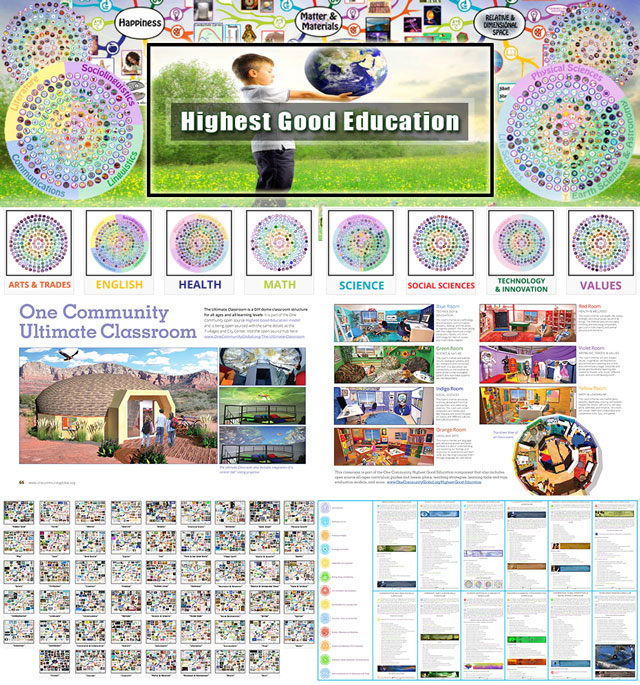
Highest Good Education: All Subjects | All Learning Levels | Any Age – Click image for the open source hub
HIGHEST GOOD SOCIETY PROGRESS
 One Community is maximizing sustainable human potential through a Highest Good society approach to living that is founded on fulfilled living, the study of meeting human needs, Community, and making a difference in the world:
One Community is maximizing sustainable human potential through a Highest Good society approach to living that is founded on fulfilled living, the study of meeting human needs, Community, and making a difference in the world:
- Read the Highest Good society overview: Highest Good Society
- Learn about the model for fulfilled living and sharing: A Day in the Life
- Learn about the 4 economic models: RBE | For-profit | Non-profit | Entrepreneurship
- Learn about our open source community collaboration and management software: The Highest Good Network
This week, the core team completed over 55 hours managing One Community’s volunteer-work review not included above, emails, social media accounts, web development, new bug identification and bug-fix integration for the Highest Good Network software, and interviewing and getting set up new volunteer team members. They also shot and incorporated the video above that talks about maximizing sustainable human potential and how maximizing sustainable human potential is a foundation of the bigger picture of everything One Community is doing. The image below shows some of this work.
Anoushka Hazari (Data Analyst) continued working on code to automate and simplify the Highest Good Network software promotion process. She reviewed team pull requests, updated the PR review table, and ensured all documentation was accurate and current. A blog was created and complemented with a collage, and a prior error on the blog was addressed for accuracy. Updates were also made to the HGN spreadsheet to align with team requirements. In terms of coding, work progressed on refining a script for data extraction, with initial errors resolved and the script functioning as expected. However, subsequent challenges arose, including a runtime error related to the StringIO library and difficulties extracting phone numbers and emails. Efforts continued to troubleshoot these issues, researching solutions and experimenting with various approaches while noting the need for additional input to resolve remaining challenges. This work helps One Community’s mission of maximizing sustainable human potential and reinforces our commitment to maximizing sustainable human potential. The following images show her work for the week.
Chitra Siddharthan (Data Analyst And Team Administrator) continued focusing on existing web pages of the HGN Phase II website, starting with testing its functionality. She created a table to track the implementation status of wireframes designed for HGN Phase II. Chitra had a meeting with Vatsal to discuss and plan the creation of a user manual for the sub-tasks of Task 1 listed in the Phase 2 WBS Excel sheet. She reviewed and provided comments on Kushagra’s Admin Training document and blog, and also checked the images and folders submitted in Dropbox related to Kushagra’s work. Additionally, she also had a meeting with Supriya to discuss work progress, plan tasks, and address the pull request raised for the Projects dropdown and the 404 page. This work helps One Community’s mission of maximizing sustainable human potential and reinforces our commitment to maximizing sustainable human potential. The following images show her work for the week.
Durgeshwari Naikwade (Data Analyst) created a new tracking spreadsheet for use with Google Analytics and Rank Math Analytics. She also completed the integration of Google Analytics with Google Search Console and Rank Math Analytics, documenting the process. In addition, Durgeshwari led the weekly meeting, assigned tasks to team members, and provided access to GA4 and GSC. The team was tasked with analyzing one webpage using the free tools and the shared spreadsheet. Key action items included reviewing progress on improving the tracking spreadsheet and SEO metrics for Rank Math. She also created 2 Excel dashboards for analyzing LinkedIn data, identifying trends for each day of the week, and providing actionable insights to help increase engagement. This work helps One Community’s mission of maximizing sustainable human potential and reinforces our commitment to maximizing sustainable human potential. The following images show her work for the week.
Feras Rehman (Data Analyst) continued working on developing One Community’s Mastodon account and strategy. He also managed his part of the One Community Updates Blog by reviewing and adding images to supplement the summary. He implemented targeted Mastodon social media strategies, resulting in a 300% increase in post reach through optimized hashtag use and improved post structuring. Feras also scheduled five additional Mastodon posts for the coming week using Buffer. Additionally, he completed a weekly review for OC Administration, enhancing the summary document with visuals. This work helps One Community’s mission of maximizing sustainable human potential and reinforces our commitment to maximizing sustainable human potential. The following images show his work for the week.
Hritvik Mahajan (Data Analyst) continued focusing on multiple tasks related to marketing, promotion, software development, and administrative activities. He worked on a Google Sheets tracker for social media engagement by manually adding Twitter data and analyzing the performance of high-engagement Twitter posts across various communities. In software development, he continued designing the HGN social media scheduler on Figma. He documented the progress while also testing frontend pull requests, addressing merge conflicts, and following up with team members for changes. Additionally, he began creating a Google Sheet to track overall social media engagement. On the administrative side, he reviewed the Step 4 documents for four team members by checking their blog pages, folders, and comments, and tested frontend pull requests on the development site. This work helps One Community’s mission of maximizing sustainable human potential and reinforces our commitment to maximizing sustainable human potential. The following images show his work for the week.
Raghav Dinesh Pamuru (Product Manager) continued focusing on designing and building a Google Sheets dashboard to simplify tracking and analyzing social media engagement. The dashboard consolidates metrics like weekly engagements, total followers, posts made, and engagement growth percentages from multiple platforms. He ensured it was accessible for team collaboration and formatted it with clear visualizations, including charts, to make data interpretation straightforward. He also collaborated with team members to gather relevant data and incorporated their input to align the dashboard with our goals and project needs. This work helps One Community’s mission of maximizing sustainable human potential and reinforces our commitment to maximizing sustainable human potential. The following images show his work for the week.
Rahul Bavanandan (Data Analyst) continued working on several key projects within the Highest Good Network software, One Community’s Reddit presence, and administration. He contributed to One Community Global by curating content for the weekly progress update, adding weekly summaries and photo collages to the webpage, and ensuring all information was accurately presented. He also reviewed summaries and images from other team members, providing feedback to enhance their contributions. For the Alpha Team, he engaged with diverse Reddit posts to increase comment karma while contributing original content to establish a presence and boost post karma. Additionally, he refined and formatted a document outlining an effective Reddit strategy. On the HGN Software Development front, he focused on translating Figma designs for the Phase 2 dashboard. This work helps One Community’s mission of maximizing sustainable human potential and reinforces our commitment to maximizing sustainable human potential. The following images show his work for the week.
Shireen Kayal (Humanitarian Program Developer & Data Manager) continued her work on branding graphics for all of One Community. This week she created new graphics for both the Highest Good energy Page and the For The Highest Good of All® philosophy page by creating clearer visual representations of key concepts. She concentrated on updating the visual content for the Highest Good energy page. She finalized the images and created a new infographic outlining the conflict resolution process. She added a version of the ‘Highest Good energy’ graphic that includes a URL, modified the ‘Holistic Farming Systems’ infographic, and created a new design for the ‘Phases of Food Infrastructure’ component. Additionally, Shireen produced new infographics for Phase I and Phase II of the Food Infrastructure on the Highest Good Food page. This work helps One Community’s mission of maximizing sustainable human potential and reinforces our commitment to maximizing sustainable human potential. The following images show his work for the week.
Vatsal Mendpara (Security Analyst) continued focusing on several tasks related to website security and plugin management. He began by deactivating unnecessary plugins and creating a detailed report on the effects of these deactivations. He also researched alternative scripts to replace the functionality of UpdraftPlus. Additionally, Vatsal tested the OWASP framework against onecommunityglobal.org, using various security tools and documenting the results in a report. He performed further testing for broken access control and SQL injection vulnerabilities on the website, compiling a report based on the findings. Lastly, he worked on patching vulnerabilities identified on the site and researched plugin version vulnerabilities to ensure the website’s security was up to date. This work helps One Community’s mission of maximizing sustainable human potential and reinforces our commitment to maximizing sustainable human potential. The following images show his work for the week.
Yash Shah (Data Analyst and Team Administrator) continued his admin work and managed the social architecture component of the Highest Good Network software. His work included addressing queries from team members working on Phase 3, explaining documentation details, and reviewing feedback from Jae. A meeting with Shreya was attended to discuss tasks, and missing pages were created during a call. A blog for Dev Dynasty was also developed, which involved organizing the weekly folder, creating a collage, and editing the summary to include all members. This work helps One Community’s mission of maximizing sustainable human potential and reinforces our commitment to maximizing sustainable human potential. The following images show his work for the week.
ADMINISTRATION TEAM A-O
The Administration Team’s summary, covering their work on administration and managing most of One Community’s program for maximizing sustainable human potential was managed by Muhammad Huzaifah (Administrative Assistant) and includes, Jessica Fairbanks (Administrative Assistant), Michael Juma (Administrative Assistant), Kishan Sivakumar (Administrative Assistant and Software Team Manager), Jibin Joby (Data Analyst), Vishnu Murali (Data Analyst), Wasim Akram (Administrative Assistant) and Olawunmi “Ola” Ijisesan (Administrative and Management Support). This week, Jessica collaborated with Syahrina on the Menu Implementation Tutorial project, focusing on testing functions in the Master Recipe Template and linking rankings from the VnOMultipliers sheet to the main Master Recipe sheet. Her efforts ensured ingredient alignment with target audience diets. She also worked on simplifying and improving the design of the Highest Good Food implementation for small-scale organizations to enhance usability and completed administrative tasks, and provided feedback to other administrators.
Jibin reviewed team contributions, created collages, updated an assigned page, attended a Google Analytics meeting, and offered project suggestions. He also uploaded corrected PDFs, researched Rank Math Analytics, and explored webpage analysis methods using Google Analytics and Search Console. Kishan carried out senior admin duties, reviewed volunteer documentation to track progress and address requests, and completed checks and edits for assigned SEO pages. He began new administrative tasks, revisited optimized pages based on feedback, and completed a weekly blog assignment for another administrator. Michael managed the energy team of three contributors by updating summary reports, reviewing the #611 blog, and improving its keyword density with Rank Math SEO, achieving a score of 90%. He addressed pending administrative feedback, communicated with senior administration, and engaged with his team to discuss projects, challenges, and timelines. One way of maximizing sustainable human potential is through effective communications channel.
Huzaifah performed administrative tasks, including a blog audit, team bio follow-ups, and blog contributions. He focused on deadline management by coordinating with volunteers to update their task durations and completed his personal bio. Ola followed up on tasks for the PR review team, monitored progress tables and social media platforms, reviewed and resized social media images, and organized admin files. Follow-up is also an effective way of maximizing sustainable human potential. Vishnu reviewed team member contributions, participated in Google Analytics meetings to discuss task assignments and deadlines, and enhanced the keyword density and word count of blogs #119 and #330 to meet content objectives. Wasim completed weekly administrative tasks for the Highest Good energy team, including uploading summaries and collages to WordPress. He attended a Google Analytics meeting to allocate tasks and improve collaboration, familiarized himself with tools like Rank Math and SEO optimization, and reviewed Khushagra’s work for the Analyzing Training team to ensure project alignment. One Community’s model for maximizing sustainable human potential includes developing and maintaining a supportive administration team like this. You can see the work for the team in the image below.
ADMINISTRATION TEAM R-Z
The Administration Team’s summary, covering their work administrating and managing most of One Community’s ongoing process for maximizing sustainable human potential was managed by Sneka Vetriappan (Data Analyst) and includes Rachna Malav (Data Analyst), Ratna Meena Shivakumar (Data Analyst and Admin), Rishabh Rao (Administrator), Saumit Chinchkhandi (Administrative Assistant and Software Engineer), Shrinivas Patil (Software Engineer) and Zuqi Li (Administrative Assistant and Economic Analyst). This week, Rachna scheduled three interviews with candidates. She then focused on checking emails and comments, continuing with SEO page optimization, and working on various assignments. Ratna prepared the weekly summary, created collages for blog posts featuring members from various teams, and scheduled posts for One Community’s Facebook and Instagram pages. She also continued to work on prompts for AI music tasks.
Rishab handled administrative tasks for Team Skye related to the blog Maximizing Eco Potential, scheduled posts for the Facebook page Sustainable Lives, and developed a tracking system to support data collection and reporting. He also attended the analytics team meeting where Phase 1 was discussed and gained access to various SEO tools. Saumit managed the pull request workflow for volunteers with first names between L and Sg, reviewing submissions and verifying necessary changes. Verification is also an important part of maximizing sustainable human potential. He updated his WordPress page, added a team summary, and created a collage. Saumit also addressed questions from Nazanin about her training document and completed frontend testing for multiple pull requests across different phases and team organization sheets, resolving merge conflicts and addressing development-related issues.
Shrinivas completed work on blog 611 for both Team Moonfall and Team Reactonauts, providing feedback to team members. He managed 28 people across the two teams and assisted Sara with the admin feedback spreadsheet. Shrinivas also tested multiple pull requests in the development environment, ensuring functionality and alignment with requirements. Maximizing sustainable human potential must also meet specific requirements. Sneka reviewed teammates’ contributions to the weekly blog, identified errors, and provided feedback for improvement. She followed up on comments to ensure alignment, added weekly summaries and collages to the webpage, and addressed conditions outlined in the review table. Zuqi organized and compiled the weekly summary for the Graphic Design Team, ensuring all key updates were communicated. She also researched key performance metrics for tracking blog page performance and identified strategies to improve SEO and increase visibility. One Community’s model for maximizing sustainable human potential includes developing and maintaining a supportive administration team like this. You can see the work for the team in the image below.
GRAPHIC DESIGN TEAM
The Graphic Design Team’s summary was managed by Zuqi Li (Administrative Assistant and Economic Analyst) and included Aurora Juang (Graphic Designer), Junyuan Liu (Graphic Designer, UI/UX Designer), Jaime Yao (Creative Technologist), and Pranali Desai (Communication Designer), covering their work on graphic designs for maximizing sustainable human potential. This week, Aurora designed bio announcements and imagery materials, organizing content in Google Documents before importing it into Photoshop. She tailored imagery to reflect each individual’s profession, prepared announcements for posting on the blog, wrote the necessary code, and ensured all details were accurate, resulting in updated bio announcements for volunteers who completed a cycle with One Community. Aurora also refined designs for Facebook campaigns based on feedback from Jae, incorporating suggestions to enhance visual elements and messaging. She addressed errors highlighted in a review video and took over tasks previously handled by a graphic designer, reworking typos and ensuring the classroom layout book met required standards.
Jaime developed visuals based on the theme “What if we saw global warming as an opportunity for collective innovation?” Projects included concepts like “Solar Canopy in Nature,” “Glacier Preservation,” “Rainmakers in Action,” and “Future Rain Systems,” which explored innovative solutions for addressing climate change. Maximizing sustainable human potential is also largely affected by changes in climatic and environmental conditions. Additionally, Jaime began work on exaggerated depictions of global warming impacts, including the “Frozen in Heat” concept, to emphasize the effects of rising temperatures on polar ecosystems. Junyuan focused on creating social media content, completing three new images through an iterative design process, and began gathering resources and developing design ideas for future images. Pranali revised visuals for the “most sustainable” graphics, incorporating feedback to update data points and statistics for greater accuracy and relevance, replacing older figures with precise information. See the Highest Good Society pages for more on how this contributes to maximizing sustainable human potential. See the collage below to view some of their work.
HIGHEST GOOD NETWORK PROGRESS
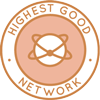 One Community is maximizing sustainable human potential through open source Highest Good Network® software that is a web-based application for collaboration, time tracking, and objective data collection. The purpose of the Highest Good Network is to provide software for internal operations and external cooperation. It is being designed for global use in support of the different countries and communities replicating the One Community sustainable village models and related components.
One Community is maximizing sustainable human potential through open source Highest Good Network® software that is a web-based application for collaboration, time tracking, and objective data collection. The purpose of the Highest Good Network is to provide software for internal operations and external cooperation. It is being designed for global use in support of the different countries and communities replicating the One Community sustainable village models and related components.
- Learn about our open source community collaboration and management software: The Highest Good Network
This week, the core team continued their work on the Highest Good Network PRs testing, confirming the fixed PRs and resolving several issues. They focused on HGN PR testing, confirming fixes for multiple issues, including the inability to create teams in the Teams feature, adding an invisibility indicator to the Teams page view, resolving load icon inconsistencies in the “Add New Project” feature for Safari, addressing cropping issues in the Team Calendar under Reports, updating the changes tracker to reflect time adjustments, enabling the deletion and re-adding of teams without saving, and correcting button spacing on mobile and tablet views. They also noted that the issue related to improving the loading time for the Total Team Report remained unresolved. Additionally, they logged hours for a Core Team account that exhibited a discrepancy in required hours when a Weekly Summary report was not submitted, contributing to PR #1141. They added a volunteer to a task with specified hours and reviewed an issue with the Edit Links window, requesting further details to replicate the problem. Lastly, they reported a bug concerning a one-day difference in end dates between the User Management and Reports pages. We continue to focus on maximizing sustainable human potential that works for everyone through iterative improvements and user-centric solutions. See the Highest Good Society and Highest Good Network pages for more on how this relates to maximizing sustainable human potential. The collage below shows some of their work.
ALPHA SOFTWARE DEVELOPMENT TEAM
The Alpha Team’s summary, covering their work on the Highest Good Network software software was managed by Lin Khant Htel (Frontend Software Developer) and includes Carlos Gomez (Full-Stack Software Developer), Nanguan Lin (Software Developer), Rupa Rajesh Bhatia (Software Engineer), and Sujith Reddy Sudini (Full-Stack Software Developer). The Highest Good Network software is how we will manage and measure our processes for maximizing sustainable human potential across our social architecture, construction, production, and maintenance processes. This week, Lin reviewed and approved PR #2929, gaining additional understanding of the codebase and testing the changes locally, with all five test cases passing. Lin also reviewed weekly summaries, photos, and videos submitted by Alpha team members and assigned new tasks to some team members based on project priorities.
Carlos resolved merge conflicts in FPR2855, FPR2772 and BPR1128, allowing Jae to successfully integrate both pull requests into the development branch, which will contribute to the overall project progress and functionality. Additionally, Jae requested Carlos’s expertise to collaborate on identifying opportunities to enhance the functionality and user experience of the dashboard components. Nanguan worked on unit tests for the WBS/WBSDetail/ImportTask/ImportTask.jsx component. The tests covered the rendering and behavior of the component, including the import button, modal, and file input. He discovered several errors and continued working on fixing them. Maximizing sustainable human potential is also prone to error that needs immediate fixing. He also edited the test file, making changes to functions that handle file selection, file reading, data validation, and uploading the imported tasks. Sujith is investigating a change on the specified page by identifying the modified element and tracking its code history to locate the PR associated with the update.
Rupa worked on styling and developing Pages 4, 5, and 6 in the multi-step form project, focusing on implementing user-friendly layouts and ensuring consistent design patterns through custom CSS. These pages incorporated dynamic form elements such as text inputs, checkboxes, and dropdown menus, with React-controlled components managing state changes to enhance user interaction. Navigation between these pages was established using React Router to ensure a smooth user experience and maintain state integrity across components. Rupa also focused on handling form validation logic and refining user input handling for better responsiveness. Additionally, Rupa reviewed summaries and Dropbox as part of managerial responsibilities, analyzing workflows and identifying strategies to improve operational efficiency. Rupa also reviewed Lin’s summary for training and learning purposes to identify patterns and techniques for technical improvement. See the Highest Good Society and Highest Good Network pages for more on how this relates to maximizing sustainable human potential. View some of the team’s work in the collage below.
BINARY BRIGADE SOFTWARE DEVELOPMENT TEAM
The Binary Brigade Team’s summary overseeing advancements in the Highest Good Network software was managed by Vijay Anand Pandian (Full Stack Software Engineer) and includes Aaryaneil Nimbalkar (Software Developer), Anirudh Sampath Kumar (Software Developer), Ashish Nagaraju (Software Engineer), Deepthi Kannan (Software Engineer), Sandhya Adavikolanu (Software Developer), Sriram Seelamneni (Software Engineer), Xiaolu Li (Software Engineer) and Ziyu Chu (Volunteer Software Engineer). The Highest Good Network software is how we’ll be managing and objectively measuring our process for maximizing sustainable human potential through our social architecture, construction, production, and maintenance processes.
This week, Aaryaneil focused on managing organization members using the GitHub API, concentrating on understanding the API’s capabilities through documentation review and initial coding within a test project. His activities included setting up CRON jobs to automate API calls for tasks such as user removal and adding test cases to validate processes like sending invitations to specific usernames and removing users from the organization. He made progress on integrating these functions into the backend, with efforts continuing to configure a CRON job to execute every alternate day for removing inactive users. Generally, active participation in maximizing sustainable human potential.
Anirudh worked on reviewing and testing several pull requests in the Highest Good Network App repository, including PRs #2890, #2891, #2893, #2894, #2895, #2903, #2909, #2910, #2913, and #2921. His efforts included verifying functionality, assessing code quality, and identifying potential improvements. He also addressed bugs assigned to him, including resolving an appearance issue with the date picker in the Add/Edit modal on the WBS page of the Project, which arose after a prior fix for validation issues in the start/end date fields. Maximizing sustainable human potential must be seen, and this is influenced by aesthetics. This was addressed by implementing necessary adjustments and raising a new pull request. Additionally, he worked on an ongoing bug related to the active/inactive status on the user management page, where the status does not update immediately upon change and requires a page refresh to reflect updates.
Ashish worked on Bug 37 from the ‘Projects/Teams/Tasks/WBS’ component, addressing an issue where users could assign a start date later than the end date while adding or editing a task. During the process, he encountered a problem with the assigned end date not persisting. He resolved the issue and submitted a pull request (PR 2927) to the frontend repository. Deepthi resolved merge conflicts for PR #2838 related to the UI of the Teams page, worked on improving the Weekly Summaries page with input from Jae, and began looking into a bug on the User Management page. She also reviewed and followed up on ongoing pull requests to ensure progress toward completion. Maximizing sustainable human potential also needs effective follow-ups.
Sandhya addressed challenges in the HGN Software Development project, including a login issue causing errors on the frontend despite successful backend operation. She investigated potential causes, including API communication and CORS conflicts, and verified the MongoDB connection by updating ensureIndex to createIndexes. Concurrently, she improved the weekly reporting system by implementing date validation, modular helper functions, and MongoDB integration for efficient data operations. Sandhya also enforced permission validations on sensitive endpoints and introduced structured error-handling mechanisms, enhancing security, usability, and scalability for future improvements. Sustainability is achievable by maximizing sustainable human potential. Sriram focused on resolving merge conflicts in an older pull request to prepare it for merging, addressing lingering issues that were not properly resolved in earlier attempts. He completed three unit tests as part of an assigned task and made progress on sorting-related issues for the inventory section on the projects page.
Vijay completed unit test implementations for the weeklySummaries Reducer (PR #2913) and the weeklySummariesReport Reducer (PR #2932) as part of the HGN software project. He also resolved merge conflicts for two pull requests addressing UI issues: one involving table search functionality on narrow screens (PR #2473) and another fixing various component display issues on screens smaller than 767px (PR #2684). Even in maximizing sustainable human potential, conflicts may exist and should be handled with care. Additionally, he worked on implementing further unit tests for the weeklySummariesReport Reducer to enhance test coverage and maintain project stability. Xiaolu completed unit tests for the WeeklySummariesReport/PasswordInputModal.jsx component.
Xiaolu verified that the title, input field, authorize button, and cancel button rendered as intended, the eye icon toggled password visibility, and the onClose function triggered upon clicking the cancel button, and checked that entering the correct password called checkForValidPwd, set the authorized password, displayed a message indicating success, and closed the modal. Xiaolu placed code images and a weekly summary video in a designated folder for review. Ziyu began working on writing unit tests for a component: Warnings/Warnings.jsx. She created four test cases to ensure the functionality and reliability of the component. These four tests passed on her local machine. Following this, Ziyu submitted a pull request and is now ready for review. See the Highest Good Society and Highest Good Network pages for more on how this relates to maximizing sustainable human potential. View some of the team’s work in the collage below.
BLUE STEEL SOFTWARE DEVELOPMENT TEAM
The Blue Steel Team’s summary, presenting their work on the Highest Good Network software was managed by Howie Miao (Software Engineer, Team Manager) and includes Jingyi Jia (Software Engineer), Dieu-Anh Trinh (Software Engineer), Ramakrishna Aruva (Software Engineer), and Supriya Sudini (MERN Stack Developer). The Highest Good Network software is how we’ll be managing and objectively measuring our process for maximizing sustainable human potential through our social architecture, construction, production, and maintenance processes. This week, Ramakrishna explored the project’s bug tracker to identify new contributions after completing his assigned tasks. He selected two issues aligned with his skills, focusing on developing a feature to generate a PDF version of a badge and addressing user management issues. After completing a detailed review of the codebase, analyzing data flow, and identifying potential bottlenecks, he experimented with various approaches to optimize functionality and integrate solutions into the system.
Dieu-Anh updated the unit testing spreadsheet by creating a new version due to lack of editing access to the original. She identified inconsistencies in the “Has Unit Tests” column, recommending standardized values of “Yes,” “No,” and “Done,” and adjusted the font size across the spreadsheet to ensure consistency. She also noted missing links to PRs for unit tests marked as “done” in several areas, including components, reducers, and actions, while backend tests had complete links. Well established links are important in maximizing sustainable human potential. Supriya developed a “not found” page component featuring an image and text designed for both dark and light modes. She organized the images in the assets/images directory within the project’s src folder and refined the CSS for alignment, padding, and color coordination. Additionally, she integrated a link to the homepage, enhancing user navigation and the overall interface. Jingyi resolved merge conflicts for her pending pull request #2804 and fixed the bug in pull request, PR #2890, for the feature adding an intangible time reminder/confirmation modal.
This modal aims to enhance compliance with time-tracking requirements by prompting users to confirm the nature of their time entries. Howie returned midweek from vacation and was tasked by Jae with taking over management of the Blue Steel group. He focused on organizing and reviewing management tasks and addressed a bug involving the clearing of the insert image link on the send emails board, with plans to submit a pull request for this fix next week. See the Highest Good Society and the Highest Good Network pages to learn more on how their work contributes to maximizing sustainable human potential. See below to view images of their work.
CODE CRAFTERS SOFTWARE DEVELOPMENT TEAM
The Code Crafters Team, covering their work on the Highest Good Network software, was managed by Summit Kaushal (Backend Software Developer) and includes Ashrita Cherlapally (Software Engineer), Dhrumil Dhimantkumar Shah (Software Engineer), Humera Naaz (MERN developer), Muhideen Mustapha (Software Engineer), Pavan Swaroop Lebakula (Software Engineer) and Swaroop Udgaonkar (Software Engineer) The Highest Good Network software is how we’ll manage and objectively measure our process for maximizing sustainable human potential through our social architecture, construction, production, and maintenance processes.
This week, Swaroop pulled recent changes from repositories to resolve placement issues in files related to people, teams, and project lists, ensuring that no merge conflicts existed. Updates were made to the UserProfile infringements feature to incorporate an array of responses, and the code was prepared for submission to the repository. Additionally, he reviewed the team’s outputs, including photos, videos, and summaries, to confirm consistency and monitor progress across tasks. Summit worked on addressing an issue with the streak logic related to xhoursxweek, implementing changes to resolve cases where badgeOfType was undefined. Maximizing sustainable human potential is also very dynamic and is essential for constant adjustment changes. During the process, additional issues with the logic were identified, and efforts to address them are ongoing. He also investigated a problem where the 30-hours-in-x-weeks badge was being removed when the 40-hours-in-x-weeks badge was assigned, making adjustments to the logic and testing the changes as part of working toward a resolution.
Humera tested the Export Featured button to verify its functionality in saving badges accurately and ensuring the feature performed as designed. Additionally, she worked on implementing team lead functionality for X members, focusing on the process of awarding badges. This included addressing issues related to the myTeam schema error, providing support to maintain task progress, and contributing to the team’s alignment with project objectives. Pavan worked on enhancing the User Management page by adding a “Title” column and streamlining the “Role” column. The tasks involved implementing a frontend interface to fetch and display data in the updated table structure, as well as modifying backend query attributes to retrieve job title information for users. An issue was encountered in correctly integrating the retrieved data into the table on the frontend, and efforts to resolve this are ongoing within the scheduled timeline. Screenshots showcasing the progress have been shared for reference.
Muhideen focused on testing the functionality of various badges and developing a feature to display badges assigned to users based on their roles. Progress included designing a table or statistical representation to show the number of users associated with each badge, incorporating features similar to total summary reports. Maximizing sustainable human potential also needs effective ways of reporting. Additional functionality was added to display a list of users when hovering over a specific badge. Work also involved creating a feature to retrieve all badges, implement a multi-select option on the page, and generate a chart distribution for the selected badges.
Ashrita worked on implementing the “Display badges assigned to all users” feature, focusing on enabling the functionality to check multiple badges simultaneously and developing a statistical pie chart to represent the badge list. The work involved making necessary code changes, refining the user interface for badge display, and addressing minor bugs identified during testing to ensure seamless integration with the existing system. Additionally, she reviewed the logic behind badge assignment and implemented improvements to enhance the performance of the badge retrieval process, progressing toward the full implementation of the task. Dhrumil worked on task 246, focusing on addressing an error in the test file, with the task anticipated to be completed next week. Another task remains pending, awaiting clarification on a small doubt, and progress on this task will commence once the doubt is resolved. See the Highest Good Society and Highest Good Network pages for more on how this relates to maximizing sustainable human potential. View some of the team’s work in the collage below.
DEV DYNASTY SOFTWARE DEVELOPMENT TEAM
The Dev Dynasty Team’s summary, covering their work on the Highest Good Network software, was managed by Jatin Agrawal (Software Engineer) and includes Fangle Xi (Software Engineer), Mrinalini Raghavendran (Software Engineer), Nikita Kolla (Full Stack Developer), Nishita Gudiniye (Software Engineer), and Shreya Vithala (Software Engineer). The Highest Good Network software is how we’ll manage and objectively measure our process for maximizing sustainable human potential through our social architecture, construction, production, and maintenance processes.
This week, Fangle began working on creating the test Meta API using her own account. She wrote some test code but was unable to complete it due to the need for a data deletion request callback and a data deletion description URL. She shared the corresponding requirements with the group to seek assistance. Additionally, she completed writing her self-introduction. Jatin created a pull request for a feature that adds a page to create custom forms for gathering questionnaire responses for various job positions at HGN. He developed the page using React, implementing functionality to generate dynamic elements of specific types upon button clicks. On the backend, he created models, controllers, and routes to enable CRUD operations for the forms. Maximizing sustainable human potential also works on well-crafted models.
Mrinalini outlined the backend and frontend requirements for several key features of the listing and bidding platform and created mockups for specific functionalities and pages. These included a Listings Homepage with pagination to display multiple listings, an individual Listing Overview page featuring high-quality images, descriptions, and amenities, and a Messaging System to enable communication between guests and hosts, complete with notifications for new messages. Communication is also necessary in maximizing sustainable human potential. She also defined a Location-Based Search feature with a search bar, auto-suggestions, and map-based results. Additionally, she worked on a Booking System incorporating date range selection, real-time price calculations, and a booking confirmation page. Mrinalini ensured that the requirements addressed potential challenges, including error handling, data validation, and user feedback. Nikita progressed on a project to create an auto-poster for Tumblr by researching Tumblr’s API library tool and applying this knowledge to design components. She made the text and image poster functional and shifted focus toward displaying all user posts within the app for centralized viewing.
Nishita set up a unit test framework and identified test cases required for ongoing tasks by reviewing the existing codebase for compatibility and pinpointing scenarios to validate functionality. She also revisited and sent for review previous API-related code changes designed to compare the number of users in a team against those not in a team, ensuring proper implementation and alignment with project requirements. Shreya focused on writing tests for the “Add Task Modal” component, tackling challenges with specific failing tests related to form field interactions, input validation, and action dispatch on submission. Using tools like React Testing Library and Redux Mock Store, she worked to ensure the modal’s functionality adhered to expected behaviors. See the Highest Good Society and Highest Good Network pages for more on how this relates to maximizing sustainable human potential. View some of the team’s work in the collage below.
EXPRESSERS SOFTWARE DEVELOPMENT TEAM
The Expressers Team’s summary, covering their work on the Highest Good Network software, was managed by Christy Guo (Software Engineer) and includes Faye Lyu (Software Engineer), Rahul Trivedi (Software Developer), Reina Takahara (Software Developer), Shreya Laheri (Software Developer), and Strallia Chao (Software Engineer). The Highest Good Network software is how we’ll manage and objectively measure our process for maximizing sustainable human potential through our social architecture, construction, production, and maintenance processes. This week, Christy focused on enhancing the ProjectTaskChart component in React. Faye focused on testing and resolving UI and functionality issues.
Rahul optimized the backend with MongoDB integration and improved UI rendering, resolving bugs across the codebase. Reina added features for deleting and searching tags, enhancing usability. Shreya finalized the phase 3 document, aligning it with project requirements and transitioning it to development. Strallia improved the Team Status chart, submitted backend updates, and identified data issues. See the Highest Good Society and Highest Good Network pages for more on how this relates to maximizing sustainable human potential. See the collage below to view the team’s work this week.
LUCKY STAR SOFTWARE DEVELOPMENT TEAM
The Lucky Star Team’s summary, covering their work on maximizing sustainable human potential, of the Highest Good Network software, was managed by Anne Zhang (Software Engineer) and includes contributions from Chetan Sunku (Software Engineer), Nikhitha Kalinga (Software Engineer), Samarth Bhadane (Software Engineer), T R Samarth Urs (Data Analyst), Shefali Mittal (Volunteer Software Engineer), Vaibhavi Madhav Deshpande (Software Engineer), Yashwanth Pokala (Software Engineer) and Ziyan Wang (Software Engineer). This week, Chetan continued working on the issue related to time updates against tasks on the dashboard, focusing on resolving the problem where logged time is not automatically reflected without a page reload. Despite seeking assistance in the coding channel group, no responses were received. Nikhitha addressed display issues with the delete badge options for screens under 1000px width in the profile section, resolved related merge conflicts, and worked on fixing failing tests tied to a pull request by analyzing logs and debugging errors. Samarth B completed the development of a user interface and backend for managing CC options for posting categories, jobs, and positions, incorporating features for managing CC lists, checking user activity, and assigning permissions for hiring roles at both category and individual ad levels. He also resolved linting issues in the SummaryBar code.
Samarth managed a PR review team, assessed their work, provided feedback, and summarized their efforts in a blog post, including a collage of submitted images. Shefali began work on creating an auto-poster for Twitter/X, reviewing PR details for context, requesting additional documentation, and researching open APIs for integration. Accurate documentation of steps is an effective way of maximizing sustainable human potential. Vaibhavi worked on action items and indexing for the HGN Phase III document, explored the development of deliverable 0, and began working on frontend routes for the new phase. Yashwanth completed and merged fixes for the “Error Labels on New User Form” bug, made progress on the “Fix Deleting a Badge Does Not Work as Expected” task pending additional input, and finished the “Remove Logging of Empty/Null Values into Permission Table” task, awaiting reviews before merging.
Ziyan reviewed Phase 2 Figma designs to identify outstanding development needs and bugs, updated corresponding tasks in shared documents, and revised the Phase 2 WBS Excel sheet to reflect current progress. Anne focused on resolving the member column filter bug, calculating active members per project but encountering a browser error (ERR_INSUFFICIENT_RESOURCES) when sorting the table. Attempts to use caching proved ineffective, and she plans to continue troubleshooting the issue. Additionally, Anne managed her team, Lucky Star, reviewed team photos and videos, and submitted weekly summaries. Learn more about how the Highest Good Society and Highest Good Network measures and assists in maximizing sustainable human potential in the Highest Good Network open source hub. See their work on the collage below.
MOONFALL SOFTWARE DEVELOPMENT TEAM
The Moonfall Team’s summary, covering their work on the Highest Good Network software was managed by Satya Shanthi Tadiparthi (Team Manager), and includes Bhavya Prakash (Software Engineer), Calvin Liu (PR Team), Newell Newell (PR Team I-N), Rachana Zha (Software Engineer), Saurabh Shetty (Software Engineer), Shashank Kumar (Software Engineer), Swathi Dharma Sankaran (Software Engineer), Vedant Gandhi (Software Engineer), and Yili Sun (Software Engineer).
This week, Bhavya shared updates with Sneka regarding a blockage on the Lead Badge issue and collaborated with Jae to explore potential solutions, including adding new functionalities to address the problem. Calvin worked on Bug 21, resolving issues with the “Add Intangible Time Entry” feature, addressed code conflicts in the Pull Request for Bug 16, and improved the stability of the Inventory Type List table and modal. Newell outlined proposals in a Project Security document, developed Terraform code for Azure deployment, and explored SSO options for workflow integration. Proposals are also important in maximizing sustainable human potential. Rachana focused on resolving a gzip bug by analyzing API data flow, researching best practices, and testing smaller components while debugging the userProfile API code.
Satya addressed layout and responsiveness issues in the Teams UI, updated components, and resolved a failing test case for PR #2736. Saurabh investigated synchronization issues in task progress and hour count updates, identifying inconsistencies and working toward real-time updates. Shashank finalized updates to the profile information tab and UI elements, added loading states, and prepared for a review from Jae before raising a pull request. Swathi outlined unit test cases for the Task.jsx component, resolved issues with team updates in the Teams table, and applied debugging changes to ensure proper functionality. Vedant focused on fixing a checkbox alignment bug, adjusted its placement, and raised a pull request while addressing a failing node test. Yili resolved a validation issue in the user profile system related to the “jobTitle” field, reproduced the bug, and worked to ensure consistent backend and frontend functionality. See the Highest Good Society and Highest Good Network pages for more on how this relates to maximizing sustainable human potential. Below is a collage for the team’s work.
REACTONAUTS SOFTWARE DEVELOPMENT TEAM
Reactonauts’ Team’s summary, covering their work on the Highest Good Network software, was managed by Vijeth Venkatesha (Software Engineer) and includes Dhairya Mehta (Software Engineer), Gmon Kuzhiyanikkal (Software Engineer), Haoyue Wen (Software Engineer), Jinxiong You (Software Engineer), Khushi Jain (PR Team I-N), Mohan Gadde (Software Engineer), Nikhil Pittala (Software Engineer), Pallavi Thorat (PR Team O-Sh), Peterson Rodrigues (Full-Stack MERN Stack Developer), Rishitha Mamidala (Software Engineer), Sharadha Shivakumar (Software Engineer).
This week, Dhairya worked on the “Fix Projects find user function” task, identifying the root cause of user discovery issues in the projects section. She implemented a sort and search function to optimize user assignment processes. Gmon focused on adding bell notifications for task deadlines and completed tasks related to active/inactive team numbers. Sticking to deadlines is also an enhanced way of maximizing sustainable human potential. She created a pull request (PR #2850), which is still in review, while another (PR #2609) is in final review.
Haoyue enhanced the Title Code functionality by allowing special characters and fixed a UI issue related to input field spacing. Jinxiong addressed bugs in the HGN Apps, including resizing the edit link window and fixing a malfunctioning update button. Khushi designed registration forms and feedback mechanisms, incorporating error, confirmation, and feedback messages aligned with branding guidelines to improve user experience. Mohan added features to filter active/inactive project statuses and adjusted CSS for layout consistency. Being consistent in action is important in maximizing sustainable human potential. He resolved an issue in the reducer. Nikhil reviewed 12 pull requests across front-end and back-end components, ensuring code quality and functionality. Pallavi tested pull requests to confirm improvements in functionality and resolved a usability issue in the Admin Dashboard’s Tasks Tab.
Peterson fixed a bug on the User Profile page related to date display after saving. Rishitha addressed blue square summary formatting issues and resolved date tag discrepancies. She started working on User Management page updates. Sharadha focused on resolving issues with weekly summaries and addressed layout problems with the “Ready for Review” button. Vijeth reviewed weekly summaries, hosted meetings, coordinated updates, and supported team members in troubleshooting bugs and resolving app slowdown issues. See the Highest Good Society and Highest Good Network pages for more on how this relates to maximizing sustainable human potential. Below is a collage for the team’s work.
SKYE SOFTWARE DEVELOPMENT TEAM
Skye Team’s summary covering their work on the Highest Good Network was managed by Rishabh Rao (Administrator) and Luis Arevalo (Software Engineer) and the team includes Abi Liu (Software Developer), Laura Cohen (Software Engineer), Sai Preetham (Full Stack Developer), Snehal Dilip Patare (Software Engineer) and Yao Wang (Software Engineer). The Highest Good Network software is how we’ll manage and objectively measure our process for maximizing sustainable human potential through our social architecture, construction, production, and maintenance processes.
This week, Abi worked on aggregating data for the volunteer reports overview page and resolved an issue with the volunteer trends query, ensuring it now returns data as expected. He refined the route and controller methods to improve their integration with the helper method, streamlining functionality and enhancing code maintainability. Laura focused on troubleshooting back-end authentication issues related to new user initialization functions. She accessed the database collections through MongoDB Compass to gain a clearer understanding of the API calls involved and revisited the front-end code for the permission change modal, exploring previously overlooked paths to retrieve role presets for maximizing sustainable human potential. Yao continued working on developing a LinkedIn post with media integration, addressing technical challenges related to media uploads and ensuring compatibility across different platforms. His efforts were directed toward optimizing user experience, troubleshooting issues with media rendering, refining upload functionality to support various file formats, and making adjustments to improve reliability based on compatibility concerns.
Preliminary testing feedback informed further iterations on the design and performance of the feature. Snehal reviewed the social media auto-poster for Facebook and Facebook groups, examined the social media scheduler document containing a flowchart, and created a list of requirements for the feature, including connecting to Facebook, sending announcements, blogs, or pictures, and integrating the feature with the “/announcement” service for content distribution. She also began researching APIs to enable the connection to Facebook for maximizing sustainable human potential. Sai Preetham worked on creating the “Tracking” button permission under a new “Tracking Management” category. He analyzed requirements, reviewed a provided video to clarify expectations, and ensured the implementation aligned with user needs. His work included exploring the existing permission structure to integrate the feature seamlessly with default access for Owners and Admins, assessing the impact on the dashboard, and outlining backend and frontend changes. He created a new branch to begin frontend development, updated the permissionsList to include the new category and permissions, modified the PermissionListItem component to render these permissions dynamically, and ensured integration with the permissions management system. Additionally, he worked on the weekly summary and Dropbox images for the week.
Luis continued working on creating new warnings. He incorporated Jae’s feedback by adding the warning items inside the modal and displaying users’ current warnings. During this process, he discovered that issuing warnings on the dashboard had broken, so he reverted his commit and created a new branch to troubleshoot the issue. He resolved the problem, integrated his updated code, and ensured that warnings were displayed correctly without allowing warnings to be issued from the user profile, restricting that functionality to the dashboard. See the Highest Good Society and the Highest Good Network pages to learn more about how their work contributes to maximizing sustainable human potential. See below for the work done by the group.
SOFTWARE PR REVIEW TEAM A-M
The PR Review Team’s summaries for team members’ names starting with A-M and covering their work on the Highest Good Network software was managed by Anoushka Hazari (Data Analyst). The Highest Good Network software is a foundation of what we’ll be using to measure our results for maximizing sustainable human potential. This week’s active members of this team were: Abdelmounaim Lallouache (Software Developer), Carl Bebli (Software Engineer), Kurtis Ivey (Full Stack Developer) and Lakshan Kandeepan (Software Developer). They reviewed all the Highest Good Network PRs (Pull Requests) shared in this week’s update. Learn more about how the Highest Good Network will measure and assist in maximizing sustainable human potential in the Highest Good Network open source hub. The collage below shows a compilation of the work from this team.
SOFTWARE PR REVIEW TEAM N-R
The PR Review Team’s summary for team members’ names starting with N-R and covering their work on the Highest Good Network software was managed by Saumit Chinchkhandi (Administrative Assistant and Software Engineer). The Highest Good Network software is a foundation of what we’ll be using to measure our results of maximizing sustainable human potential. This week’s active members of this team were: Nahiyan Ahmed (Full Stack Software Developer), Nathan Hoffman (Software Engineer), and Pratyush Prasanna Sahu (Software Engineer). They reviewed all the Highest Good Network PRs (Pull Requests) shared in this week’s update. Learn more about how the Highest Good Network measures and assists in maximizing sustainable human potential in the Highest Good Network open source hub. The collage below shows a compilation of the work from this team.
SOFTWARE PR REVIEW TEAM Sh-Z
The PR Review Team’s summary for team members’ names starting with Sh-Z and covering their work on the Highest Good Network software was managed by Olawunmi “Ola” Ijisesan (Administrative and Management Support) and Samarth Urs (Administrative Assistant and Data Analyst). The Highest Good Network software forms the foundation for measuring our results in maximizing sustainable human potential. This week’s active members of this team were: Samman Baidya (Software Engineer) and Shraddha Shahari (Software Engineer). They reviewed all the Highest Good Network PRs (Pull Requests) shared in this week’s update. Learn more about how the Highest Good Network will measure and assist in maximizing sustainable human potential through the Highest Good Network open-source hub. The collage below shows a compilation of the work from this team.
AND WE PRODUCED THIS WEEKLY UPDATES BLOG – CLICK HERE TO SUBSCRIBE
FOLLOW ONE COMMUNITY’S PROGRESS (click icons for our pages)
INVESTOR PAGES
GET INVOLVED
DONATE | WAYS ANYONE CAN HELP | MEMBERSHIP
CLICK HERE FOR ALL PAST UPDATES
 One Community
One Community

